
- Boat Supply , How to , News

Boat Fenders: how to choose and use them properly
- Camilla Ruffa
- April 19, 2024
Fenders play a crucial role in preserving the integrity of boats when they are moored or approaching a dock, protecting them from impacts against the dock or other vessels.
But what exactly are fenders? What models exist and in what situations is it advisable to use them? In this article, we will explore in detail everything there is to know about fenders: from their definition and composition to their operating principles and the importance of using them correctly.
Boat Fenders: Definition
A fender is an object, usually spherical, cylindrical, or flat, used to protect surfaces from impacts. On boats, fenders are positioned on the gunwales, stern, or bow to prevent accidental collisions or rubbing against the dock or other boats.
The material they are made of can vary depending on the model: they can be hollow, solid, rubbery, or spongy, but the most common ones have an outer PVC or rubber coating and an internal air chamber. Their absorbing and elastic properties make them indispensable tools on board.
Types: a comprehensive overview
“Depending on the surface to be protected, there are different types of fenders: for tenders, for docks, for boats, for specific surfaces, etc.
Each of them has a precise shape and composition for the intended use. Let’s examine them in detail.
Cylindrical Fender
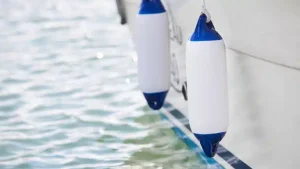
When positioned vertically, it provides protection to the boat’s hull even in the presence of tidal variations, while when applied horizontally, it offers protection over a wider surface area of the boat.
Fenders with this shape typically feature an outer rubber coating and an internal air chamber, adjustable through a valve.
Spherical Fender
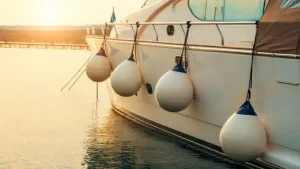
Flat Fender
The flat fender has a rigid and solid structure. Thanks to its slim shape and compact size, it represents an excellent solution when space is limited. Typically made of foam, sometimes with a nylon coating depending on the model, flat fenders are designed for versatility in usage and provide ample protection in confined spaces.
An interesting characteristic of these fenders is that when they are not actively protecting the boat, they can double as cushions or small tables. On the downside, however, they have low impact resistance and are very lightweight. This makes them susceptible to strong winds and rough seas, rendering them vulnerable to damage.
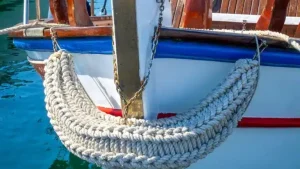
How many fenders to apply to the hull
The most common question on the topic is: “How many fenders do I need to have on board?” The contrast between limited space available and the need to protect the boat opens up various scenarios and possibilities. Certainly, the choice of fender type influences the final outcome, because using only spherical fenders does provide better protection, but requires much more space when not in use on the bulwarks.
Therefore, the type of fenders, their diameter, and the length of the boat all play a role in defining an ideal number of fenders to always keep on board.
Following a theoretical approach, we should position the fenders approximately 2 meters apart, taking into account their diameter, which can range from 9 to 50 cm, depending on the boat’s size and the height of the bulwarks.
For example, on a 10-meter sailboat , we can apply 3 cylindrical fenders, each with a diameter of 20-25 cm, on each side.
Still theoretically, the size of the fenders should ensure coverage of ⅔ of the vertical surface of the topsides.
How to secure the fenders
The most common way to secure the fenders to the hull is by making a loop at the end of the fender and tying a cleat hitch (also called a clove hitch knot) onto the lifelines or the base of the stanchion with the other end of the line.
The length of the line varies depending on the height of the topsides. Generally, it should be long enough to allow the fender to be lowered to the water’s surface in case there are very low obstacles to safeguard against.
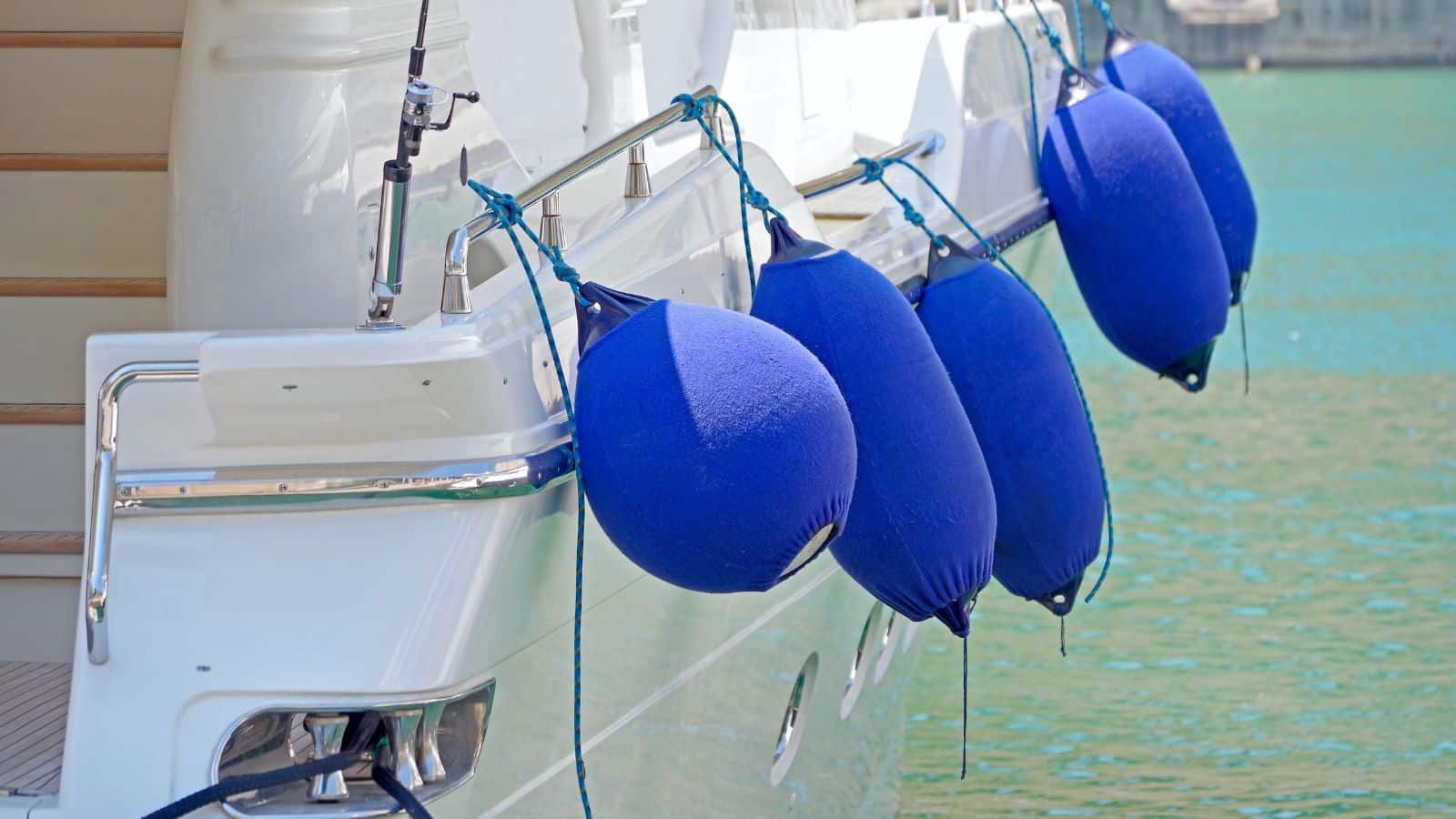
How much to inflate them
In nautical stores and marinas, it’s possible to purchase fenders already inflated, but due to space and size considerations, it’s more likely that elsewhere (such as on online shopping platforms), they are sold deflated and flattened.
Therefore, it becomes important to know how much to inflate them and with which tools.
Firstly, there are two types of valves for inflating fenders: screw valves and needle valves. Screw valves feature a safety screw that seals the opening, while needle valves provide a direct path to the air chamber.
Fenders can be inflated using a simple compressor, available in various workshops, nautical stores, or gas stations, or with a manual pump.
Regarding pressure, manufacturers usually provide guidelines on how much they should be inflated. Typically, fenders require a pressure of about 0.15-0.20 bar under ambient conditions of 20°C. As the temperature increases, the pressure should be reduced.
In the absence of a pressure gauge, the operation to determine if they have been inflated correctly is as follows: applying pressure with a finger on the fender, it should flex by about 1 cm.
Where to store the fenders: the stowage
Although extremely useful, fenders can be bulky, so unless you decide to inflate and deflate them every time you use them, you need to find a suitable place to store them. Lockers, if spacious enough, are the ideal place to stow them because they are enclosed spaces, away from the sun and weather elements responsible for fender wear and tear.
If lockers don’t provide enough space, there are several fender supports available on the market that can be positioned on the deck and railings.
As for spherical fenders, which are more difficult to stow, they can be hung astern, on the pulpit, or on the stanchions, ensuring that the downwind ones don’t end up in the water in windy conditions.
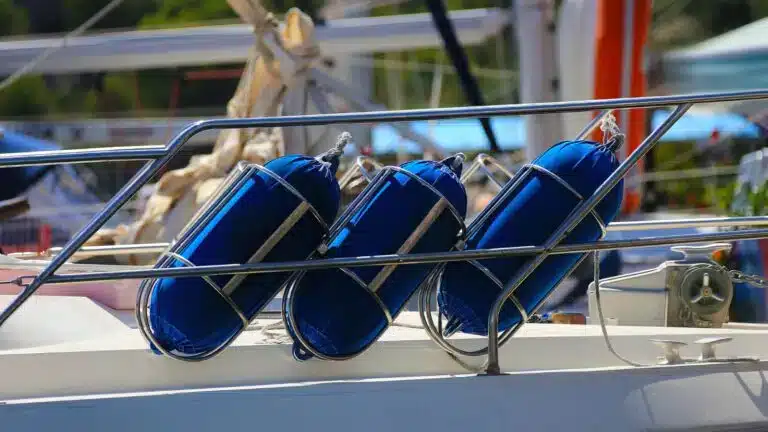
In conclusion, fenders are an essential tool for protecting the boat as a whole during mooring and unmooring maneuvers. Unlike cars, boats float on an unstable, never-still surface, making it practically impossible to approach any maneuver without risking hitting a dock or another boat. The same applies to moorings in the harbor: boats are never perfectly still, and fenders are the only barrier between the hull and the dock.
They are the only protection against chafing, impacts, and damages. Knowing how to use them correctly is not only very important but also marks the boundary between a boat at risk of damage and one moored safely.
Leave a Reply Cancel reply
Your email address will not be published. Required fields are marked *
Save my name, email, and website in this browser for the next time I comment.
Language switcher
Browse categories.

You might be interested in
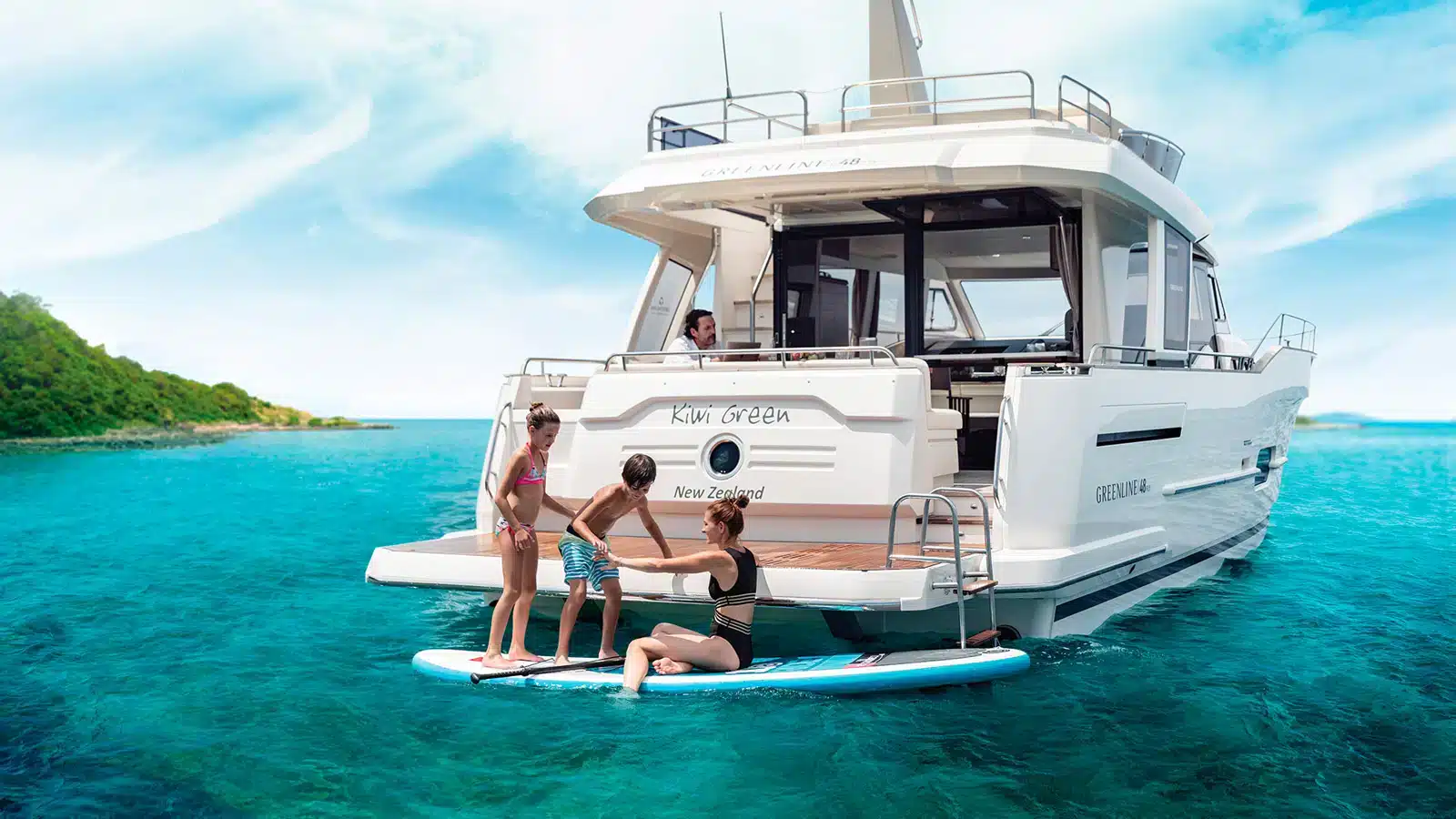
Greenline 48: timeless design, even after 10 years
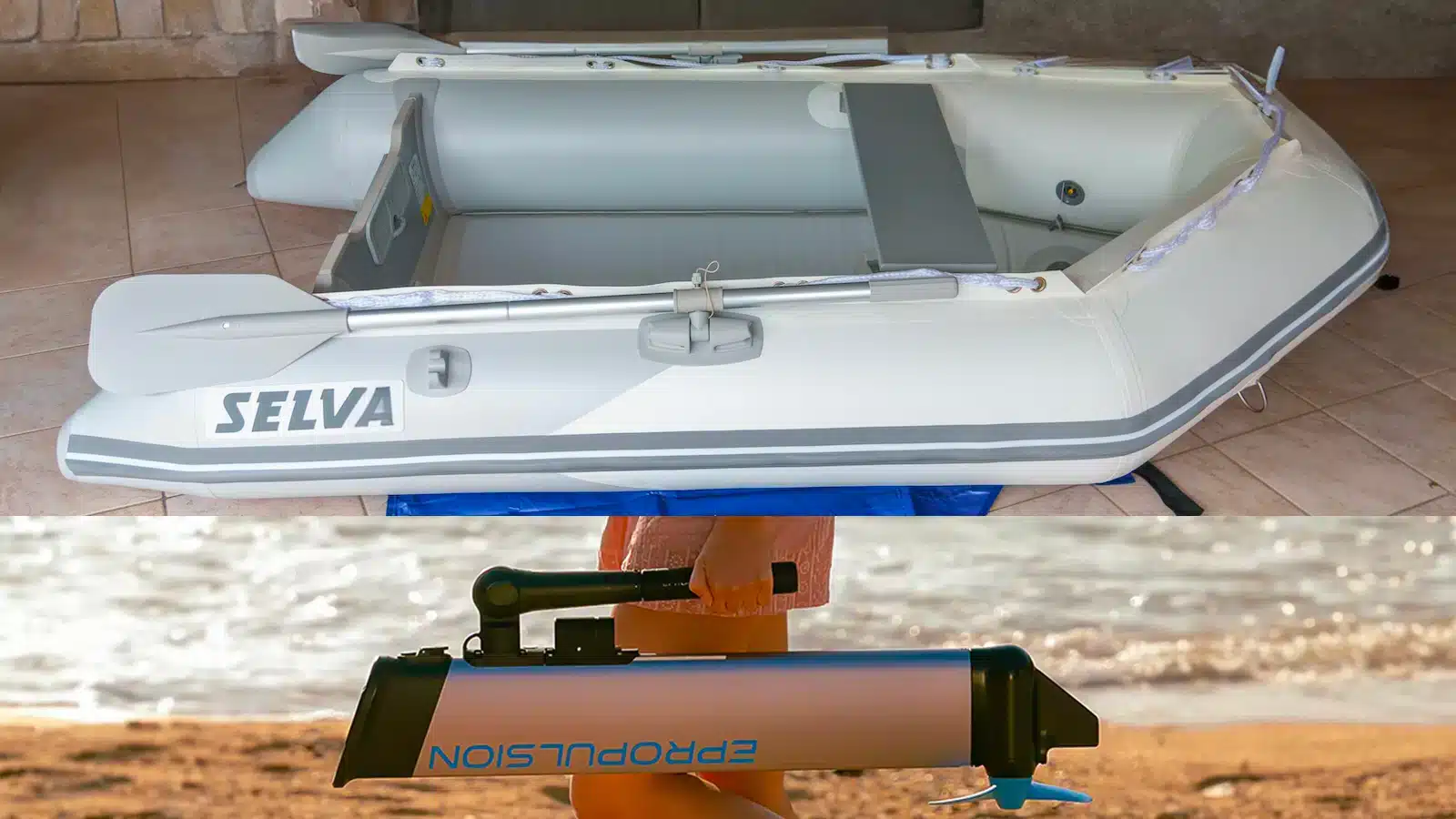
Selva T 230 VIB and ePropulsion eLite: the test begins
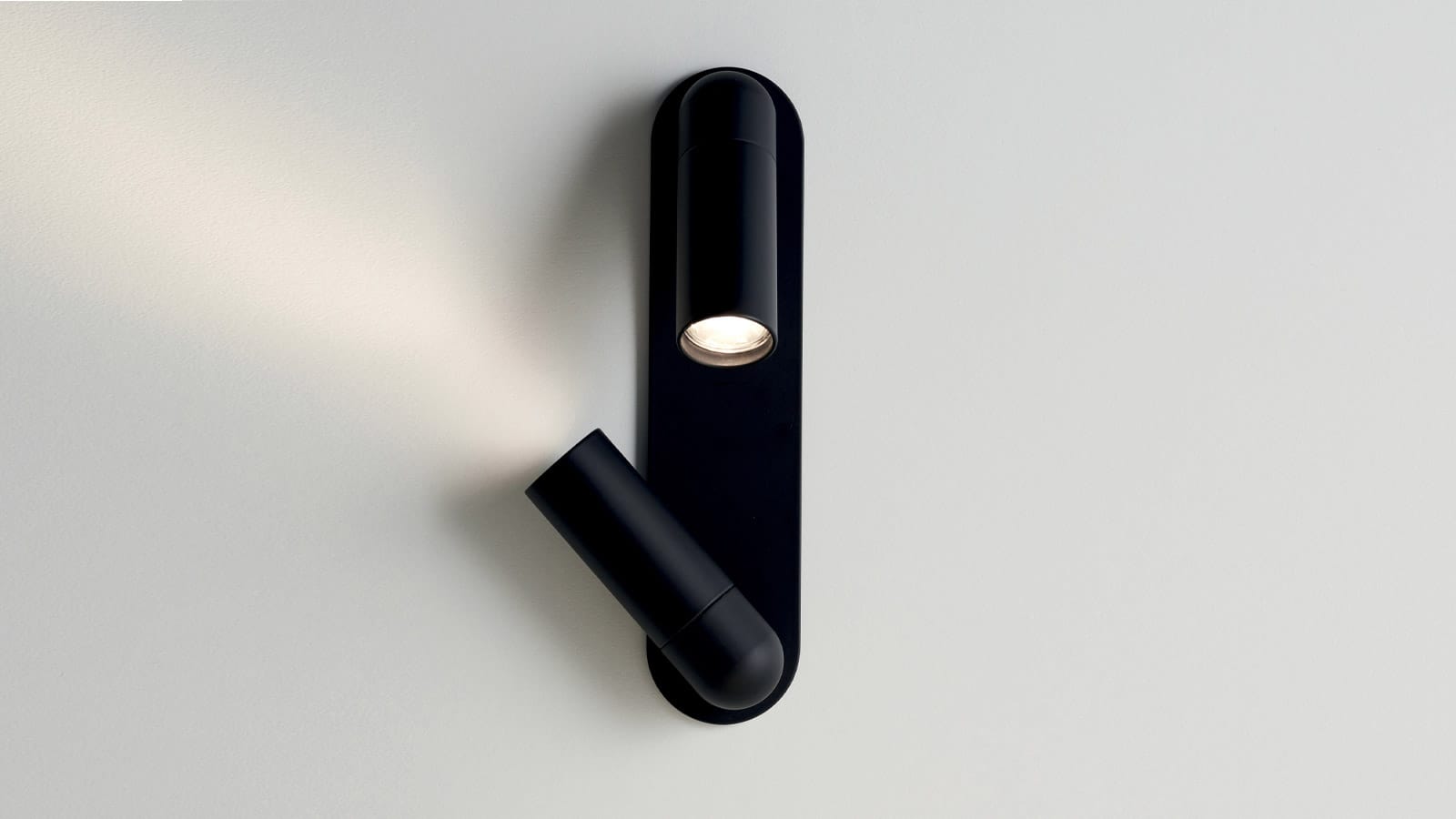
Compasso d’oro, honorable mention for Quick Arcipelago Capsule collection
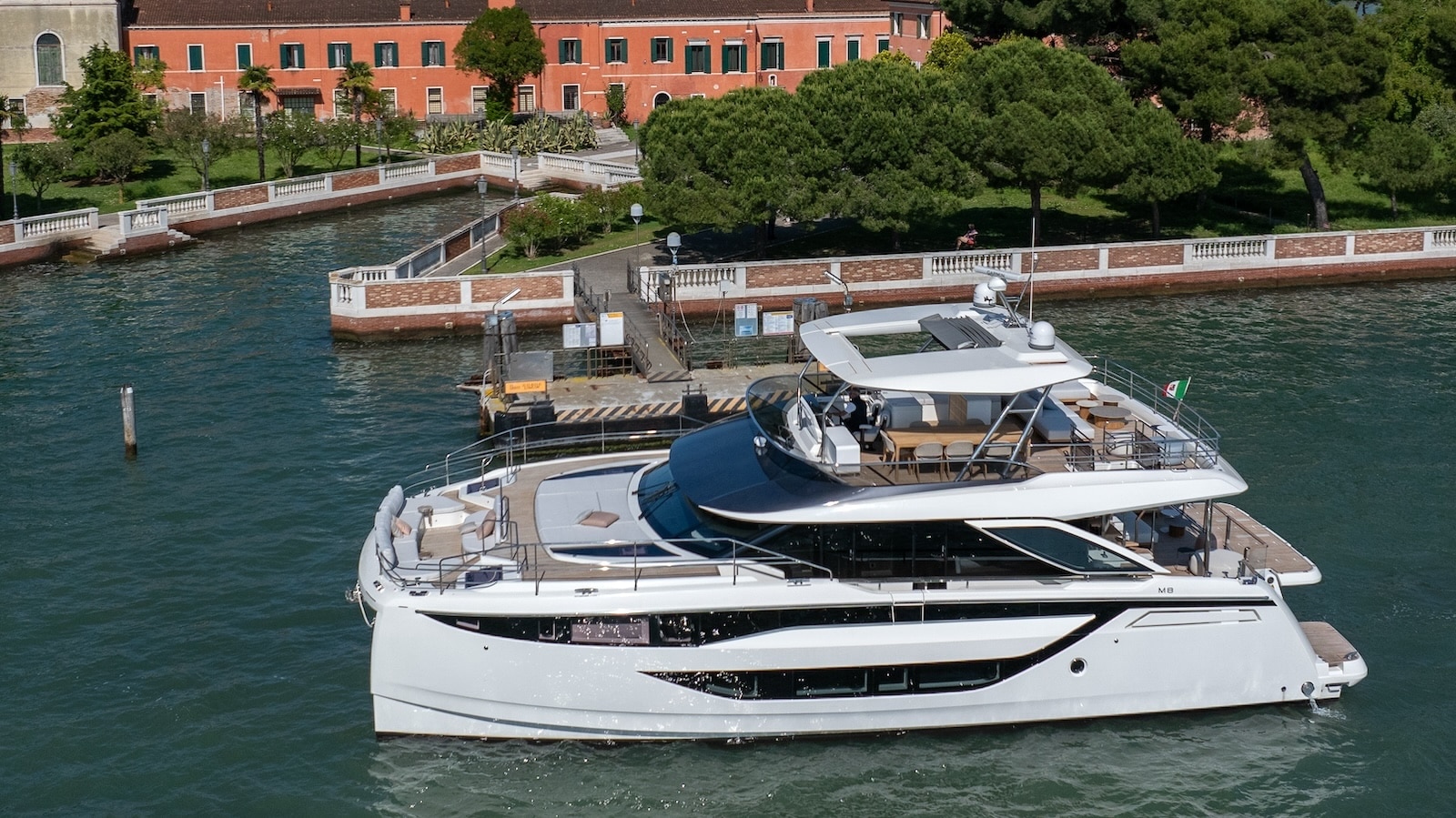
Prestige M8: first-class navigation from Monfalcone to Venice

© 2021 – THE INTERNATIONAL YACHTING MEDIA Designed by BLive Communication
ABOUT YACHTINGNEWS.COM
Yachting News is an interactive multimedia magazine dedicated to the world of boating.
The International Yachting Media is the worlds most widely read boating magazines network. Whit its portal It broadcast its original contents in five languages and in more than 200 countries developing 950,000 views a week. Our web portals are the main source of information for yacht and boat owners, the place where they can find anything about their boating passion.
THEINTERNATIONALYACHTINGMEDIA.COM | SUPERYACHTS.NEWS | YACHT DIGEST
VIRTUAL BOAT SHOW | TUTTTOBARCHE | TOUSLESBATEAUX | TODOSLOSBARCOS
BOATING NEWS FREE APP

To provide the best experiences, we and our partners use technologies like cookies to store and/or access device information. Consenting to these technologies will allow us and our partners to process personal data such as browsing behavior or unique IDs on this site and show (non-) personalized ads. Not consenting or withdrawing consent, may adversely affect certain features and functions.
Click below to consent to the above or make granular choices. Your choices will be applied to this site only. You can change your settings at any time, including withdrawing your consent, by using the toggles on the Cookie Policy, or by clicking on the manage consent button at the bottom of the screen.
Subscribe For Latest Updates
Sign up to receive the best of Yachting News, sea trials, boat review and world premieres .
The only ADVERTISING FREE newsletter
Yachting Monthly
- Digital edition

Best boat fenders: 7 of the best options for protecting your topsides
- Phil Sampson
- November 16, 2022
We take a look at 7 of the best boat fenders on the market right now, which are available in various shapes and sizes

Doubling up your fenders can create a useful step
If ever there was an unsung hero in the world of boating, it surely has to be the humble fender. Ubiquitous and largely maintenance-free, fenders dangle fearlessly in the face of adversity, protecting the valuable and vulnerable hulls of their owners from miscalculations at the helm and the wayward actions of other boaters alike.
It follows, therefore, that fenders should not be regarded simply as ‘fit and forget’ items, but as integral safety components with the potential to protect against substantial damage-repair costs.
Consequently, it’s well worth reviewing the complement of fenders attached to your boat and asking questions such as: are they the right type and size? Do I have enough of them? Are they in a serviceable condition?
What to look for in a good set of boat fenders
In terms of type, side-hull fenders are most commonly cylindrical, ball or flat/cushion, while bows and transoms can be protected with shaped fenders made specifically for purpose. A commonly used sizing guide for cylindrical fenders advises between 25-50 millimetres diameter for every 1-1.5 metres of boat length.
The length of the fender itself will depend on the freeboard of the boat to which it is attached. A minimum of three fenders per side is recommended, with at least one placed every 3 metres along the length of the boat. A ball fender at the bow not only guards the sharp end from collisions but also comes in handy as a rover or when springing off pontoons .
Always ensure your fenders are pumped up to the correct pressure – generally between 0.15 and 0.2 bar – and show them some love by cleaning them regularly. That way, they will give you many years of service in return.
And lastly, if you’re too posh to pull, why not try an automatic fender system ?
Here’s our pick of the best boat fenders on the market today.
Best boat fenders available right now

Polyform G series boat fenders
Available in six sizes to accommodate boats from sub-10 feet to up to 40 feet in length, the Polyform G Series is a high quality, good looking product boasting an even wall thickness for strength and durability.
Moulded-in ribs add to the strength while also providing protection against abrasion. Manufactured from vinyl and available in no less than 16 colours, Polyform fenders have a unique valve designed to give many years of trouble-free service.
All G Series fenders have an eye at either end so they can be vertically or horizontally mounted.
Price: £14-99 – £157.43
Buy it now Amazon (UK)
Note: We may earn a commission when you buy through links on our site, at no extra cost to you. This doesn’t affect our editorial independence.

Majoni white/blue boat fenders, set of four
Our pick here is a bundle of four size 2 (15 x 56 cm) Majoni fenders. Described as being ideal for boats from 19-22 feet in length and supplied ready inflated, the deal listed below includes a complimentary set of fender ropes.
That means each fender and its rope comes in at less than £15 each, which we reckon represents good value by any measure.
The styling – a white body tipped with blue at either end – is a long-time boater’s favourite which adds a splash of colour to a fender set which might otherwise look a touch drab, especially after a season or two’s use.
Price: £57.49

Ocean Series R round fender
Ocean’s Series R round fenders are heavy duty units, and as such are much favoured by commercial fishermen as well as recreational boaters. Available in a selection of eight sizes from R0 (22 x 30 cm) to R7 (100 x 138 cm), Ocean’s Series R caters for boats from 3 to 24 metres.
All Series R fenders have a rib-reinforced eye to ensure ropes are held securely and safely over the long term. The buoy’s one-piece construction, consistent wall thickness and UV resistance all add strength and durability to this well designed product.
And if white with a blue tip doesn’t take your fancy, R Series buoys are also available in red tipped with dark blue.
Price: £20.25
Buy it now on eBay

Anchor Marine standard fenders
Anchor Marine has been manufacturing fenders in the UK for more than half a century. Moulded in UV-resistant PVC and available in 12 colours in addition to base white, the company’s standard boat fenders are popular among commercial and leisure users.
Ruggedly constructed with a high resistance to bursting – due to what Anchor Marine describes as its ‘class leading wall thickness’ – each fender has an eye at either end to allow horizontal or vertical attachment to the boat.
Fitted with valves for easy inflation and deflation, all Anchor Marine standard fenders have hard thimble eyes to reinforce rope securing points.
Price: £7.95 – £49.95
Buy it now on Marine Superstore

Anchor Marine transom fender
Our second featured product from Anchor Marine are these transom fenders, which have been designed to give protection to any boat with a vulnerable transom or bathing platform. And if you’d rather not fit them to your boat, they can just as easily be mounted to the exposed corners of a marina berth or finger pontoon instead.
Supplied with two mounting strips and offered in four colours – white, royal blue, black and navy – these fenders measure 13 x 10 x 10 cm and weigh in at just under a kilogramme. Built to the same high standards as all other Anchor Marine products, these transom fenders could well pay for themselves in single bump!
Price: £27.99
Buy it now on Marine Scene
Flat/cushion fenders
The obvious advantage of flat or cushion fenders is that they will not puncture or deflate, meaning 24/7 protection is provided regardless of whether the owner is on hand to keep a watch on them.
Our pick here is Force 4 Chandlery ‘s own-brand flat/cushion fender. Available in two sizes – 41 x 21 x 5 cm and 55 x 29 x 7 cm – these blue and white semi-rigid fenders are manufactured from tough PU closed-cell foam which will not absorb water.
Being flat, they are also easy to stow and, as Force 4 helpfully points out, double up as cockpit cushions or kneeling pads when not in use protecting the boat.
Price: From £27.95
Buy it now on Force4

Talamex bow fender
Talamex Marine Products is the house brand of the Yachting Division of Netherlands-based distributor, Lankhorst Taselaar/Hohorst. As such, a wide range of quality marine equipment and fittings are marketed under the Talamex name, including the bow fender we have selected here.
The attraction of this three-eye horseshoe-shaped unit is that it is billed as a one-size product and thus should be suitable for a variety of boats and hull types. Anyone who has ever bashed their bow into a pontoon will certainly appreciate the benefits a bow fender can offer!
Price: £25.49
Buy it now on Amazon (UK)
New color ropeholds available for F Series Fenders and larger A Series and LD Series Buoys
Free Continental US and Discounted Worldwide Shipping For Orders Over $100 USD. Learn more...
Gift Cards now available, $25 - $1,000 USD
- United States (USD $)

Boat Fender Guide
BOAT FENDER APPLICATIONS AND SUGGESTED POLYFORM FENDERS
SMALLER BOATS AND PROTECTED MOORINGS
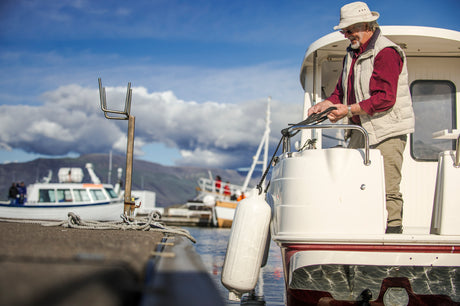
SMALLER BOATS UNPROTECTED MOORINGS
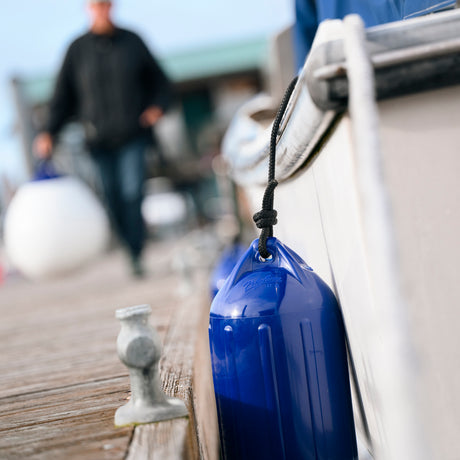
LARGER BOATS UNPROTECTED MOORINGS
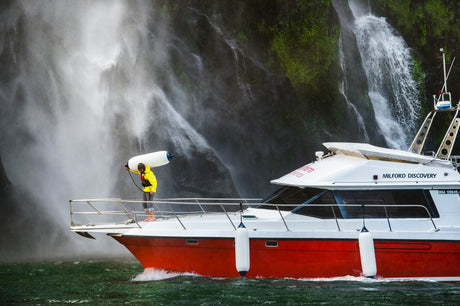
FENDER SIZING GUIDE
The Polyform US Fender Guide should be used as a general guide. Common sense, as well as an understanding of your boat and mooring conditions, must be considered. The final responsibility has to be taken by the consumer due to many variables out of Polyform's control.
| Boat Size | Fender Selection | Buoy Selection |
|---|---|---|
| Up to 10' | G‑1 | A‑0 |
| 10'‑15' | G‑2, NF‑3 | S‑1, A‑0 |
| 15'‑20' | G‑3, NF‑3 | S‑1, A‑1 |
| 20'‑25' | F-1, F-02, F-2, F-3, G-4, HTM-1 NF-4 | A‑1, LD‑1 |
| 25'‑30' | F-02, F-2, F-3, G-5, HTM-2, NF-5 | A‑1, LD‑1 |
| 30'‑35' | F-4, F-5, G-5, HTM-3, NF-5 | A‑2, LD‑2 |
| 35'‑40' | F-5, F-6, G-6, HTM-3 | A‑2, LD‑2 |
| 40'‑50' | F-6, HTM-4 | A‑3, LD‑3 |
| 50'‑60' | F-7, F-8 | A-4, LD-4 |
| 60'‑70' | F-8, F-10, F-11 | A-5 |
| 70'‑Up | F-11, F-13 | A-6, A-7 |
FENDERING TIPS
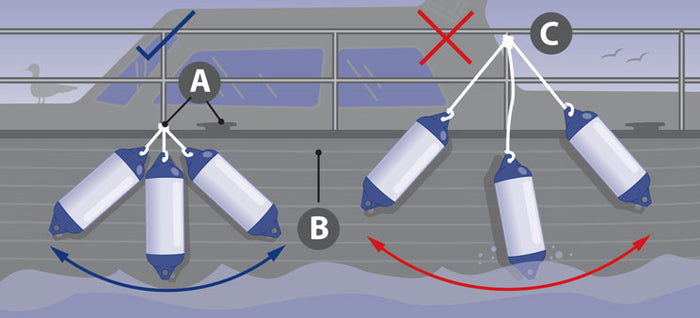
FENDER TIPS
Use at least three fenders when docking.
- Tie fenders to something solid like a stanchion base or deck cleat along the rail.
- Always hang fenders close enough to the surface of the water.
- Do not tie the fenders high. This could allow them to swing in a wide arc, causing them to end up on top of the dock rather than between the boat's hull and the dock where they're needed.
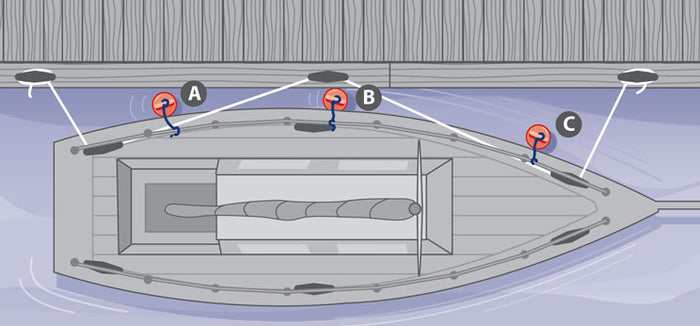
- One fender at aft.
- One fender at maximum beam.
- One fender at fore.
Polyform fenders and buoys should be stored in a safe place out of direct sunlight.
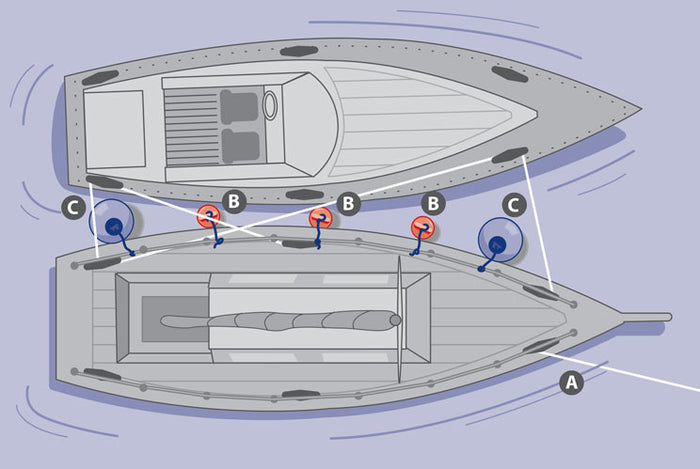
- When rafting, the best fendering technique is to have the fenders in place on the boat already moored or at anchor.
- Position three standard fenders fairly close to maximum beam.
- Position two round A Series or LD Series buoys fore and aft to provide greater protection from boats tossing into each other.
FENDER LINE TIPS
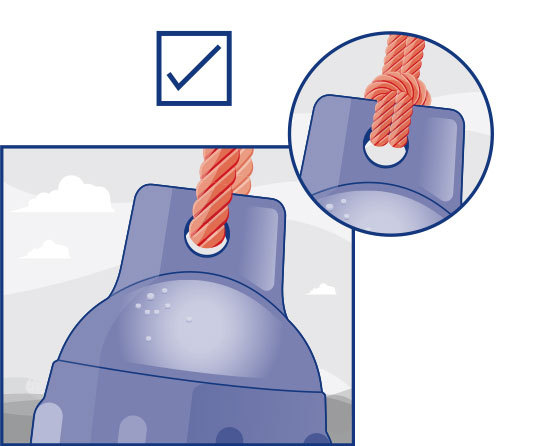
It's important to use the proper size line (diameter) based on the size of the fender and the ropehold. We recommend when using a single line nothing less than 3/8" diameter for the smaller fenders up to as large as 1" depending upon the size of the fender and the diameter of the ropehold. When using a looped connection or doubling the line 1/4" for smaller ropeholds and 3/8" for larger ropeholds is recommended. The idea is that you want to fill as much of the diameter of the ropehold with the line in order to disperse the load over the greatest area of the ropehold.

Using a line diameter that is too small can act like a knife and abrade or create friction on a single point in the ropehold causing the ropehold to crack or tear. We prefer and recommend nylon rope over other types because of its stretch properties. It is a little more forgiving and softer creating less friction. Remember, rope is much stronger than the PVC our fenders are made from, and always wins in the end.
Your cart is empty
Subtotal:$0.00 USD
Just added to your cart

Extreme Welded Yacht Fender
Adding product to your cart
Need fenders for your boat or yacht? ProStock Marine Extreme Yacht Fenders are the very best! We carry a full line of assorted size protection fenders ranging from 12 inches in diameter by 24 inches long to 48 inches in diameter by 168 inches long long. All of our EXTREME Boat Fenders and Yacht Fenders have been welded inside and outside to ensure a perfect seam. Our fenders do not leak!!! 5-Year Warranty
Don't forget to order a Terry Cover or Neoprene Cover for your new Yacht Fender
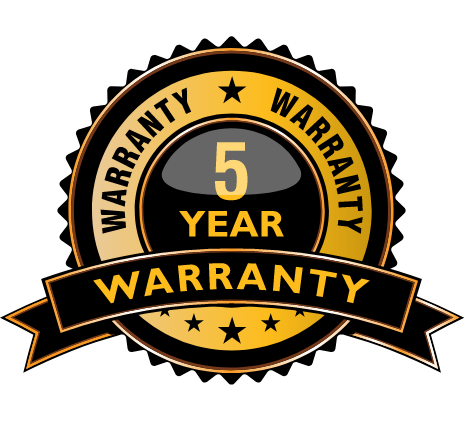
ProStock Extreme Inflatable Fenders have the best "warranty in the industry"
If a manufacturing defect causes failure at any time during the 5 years after purchase, we will repair or replace the product at no charge.
- Choosing a selection results in a full page refresh.
- Press the space key then arrow keys to make a selection.
- Fenders for Boats: A Comprehensive Guide to Marine Fendering
When it comes to protecting boats from damage caused by impact with docks, other vessels, or even natural elements, marine fenders play a vital role. Fenders act as a cushion, absorbing the shock and preventing potential harm to boats. In this article, we will delve into the world of boat fenders, exploring their different types, their importance, and how to choose the right fenders for your watercraft.
1. Understanding Fenders for Boats
Boat fenders, also known as marine fenders, are essential accessories designed to safeguard boats and docks from damage. These protective devices create a buffer zone, preventing any hard contact that could lead to scrapes, dents, or more serious structural harm. Fenders are often made from materials like rubber, foam, or plastic, each offering specific advantages such as durability and resistance to UV rays.
2. Types of Boat Fenders
There are various types of boat fenders available in the market, each catering to specific needs. Some common fender types include:
2.1. Cylindrical Fenders
Cylindrical fenders are the most basic and widely used type. They come in different sizes and are suitable for various boat types. Their versatile design allows them to be installed both horizontally and vertically. Cylindrical fenders are particularly effective for boats that have a straightforward hull design.
2.2. D-shaped Fenders
As the name suggests, D-shaped fenders have a flat surface on one side, making them ideal for protecting flat areas on boats, such as gunwales and hull sides. They can be easily attached to the boat's surface, and their unique shape provides excellent protection against impact.
2.3. Cone Fenders
Cone fenders are highly effective in absorbing large amounts of energy, making them suitable for heavy-duty applications and areas with high berthing energy. The conical shape allows them to distribute pressure evenly, reducing the stress on the boat's hull during docking.
2.4. Arch Fenders
Arch fenders are designed to distribute pressure evenly, making them perfect for vessels with a delicate hull or where mounting space is limited. They are commonly used on piers, quays, and other structures where the boat may come into contact with protruding edges.
2.5. Pneumatic Fenders
Pneumatic fenders, also known as inflatable fenders, provide excellent protection and are commonly used for larger vessels and in ship-to-ship transfers. These fenders can be easily inflated and deflated, making them convenient for storage and transport.
3. Selecting the Right Boat Fenders
Choosing the right boat fenders is crucial to ensure proper protection and avoid potential damage. Several factors should be considered when selecting fenders for your boat:
3.1. Boat Size
The size of your boat plays a significant role in determining the size and quantity of fenders required. Larger vessels typically need more substantial fenders to provide adequate protection. Additionally, the boat's weight and draft should be taken into account when choosing fenders.
3.2. Berthing Conditions
Evaluate the berthing conditions of your usual docking area. Understanding the water currents, tidal fluctuations, and the type of dock or pier will help in choosing fenders with the appropriate strength and durability. For areas with rough waters or high berthing energy, stronger and more resilient fenders are recommended.
3.3. Type of Vessel
Different types of vessels may require specific fenders based on their design and structure. For example, powerboats and sailboats might benefit from different fender types. Consider the boat's shape and contact points to select the fenders that will offer the best protection.
3.4. Fender Material
Fenders are made from various materials, each with its own set of advantages. Rubber fenders are popular for their durability and resistance to abrasion. Foam fenders are lightweight and easy to handle. Plastic fenders, on the other hand, are resistant to punctures and UV rays. Consider the specific needs of your boat and the prevailing weather conditions to choose the most suitable fender material.
Read our top notch articles on topics such as sailing, sailing tips and destinations in our Magazine .
Check out our latest sailing content:
The most popular catamarans of 2023, explore tuscan archipelago in one week, skippered boats: how to pack for a yachting holiday, boat rental with skipper: everyone can go to sea, skippered boats: myths about sailing, sail from lefkada for 14 days. where to, what not to miss when visiting lefkada, skippered boats: step-by-step boat rental, where and why to sail from lefkas marina, don’t panic: handling maritime emergencies, skippered boats: how to choose a boat, the best sailing routes from biograd na moru, yachting away from ourselves: a voyage to inner peace, sail to the 7 most beautiful sights in greece, skippered boats: how to put together a crew, skippered boats: the most popular yachting destinations, what skipper's licence do i need, skippered boats: what you can experience when yachting, from lefkada or corfu to paxos and antipaxos, discover the paradise of paxos and antipaxoss, skippered boats: typical day on board, skippered boats: what it actually looks like on a boat, discover corfu: sailing adventure in the ionian, sextant and navigation: survival without gps, 5 best sailing routes in the bahamas, skippered boats: how much does a boat holiday cost, yachting guide to the bahamas, the ultimate yacht cleaning kit, introduction to chartering with a skipper, traditional sailor tattoos: meaning of the swallow.
4. Installing Boat Fenders
Proper installation of boat fenders is essential to ensure maximum protection. Follow these steps for correct fender installation:
4.1. Positioning
Place the fenders at the right height to match the dock or other vessel's contact points. Proper positioning is crucial for effective protection against impact. Ensure that the fenders are neither too high nor too low, and secure them firmly using appropriate fender lines or ropes.
4.2. Spacing
Determine the optimal spacing between fenders to cover the boat's vulnerable areas effectively. Spacing may vary depending on the fender type and boat size. The goal is to create a continuous buffer zone along the boat's sides and critical points of contact.
4.3. Adjustability
Make sure the fenders can be easily adjusted to accommodate changes in water levels or berthing conditions. Tidal fluctuations or changes in the water level may require fender adjustment to maintain effective protection.
4.4. Regular Inspection
Inspect the fenders regularly for signs of wear and tear. Fenders exposed to harsh conditions, such as extreme temperatures or strong UV rays, may deteriorate over time. Replace any damaged or heavily worn fenders to ensure continuous protection.
5. Maintenance and Care
To prolong the life of your boat fenders and maintain their effectiveness, follow these maintenance tips:
5.1. Regular Inspections
Check fenders at least once a month for signs of wear and tear, and inspect them after any significant impact or harsh weather conditions. Regular inspections allow you to identify any issues early on and take appropriate action.
5.2. Cleaning
Clean fenders periodically to remove dirt, salt, and grime, which can degrade the fender material over time. Use mild soap and water to clean the fenders and avoid using harsh chemicals that may damage the fender's surface.
5.3. Proper Storage
Store fenders in a dry and cool place when not in use, protecting them from harsh weather conditions. If the fenders are inflatable, ensure they are properly deflated and folded for compact storage.
Marine fenders are essential accessories for any boat owner, providing the necessary protection against potential damage during docking and berthing. By understanding the different types of fenders available and following the guidelines for selection, installation, and maintenance, boat owners can ensure their vessels remain safe and in excellent condition for years to come.
So what are you waiting for? Take a look at our range of charter boats and head to some of our favourite sailing destinations.
FAQs about boat fenders
I am ready to help you with booking a boat for your dream vacation. contact me..

Denisa Nguyenová
- 2024 BOAT BUYERS GUIDE
- Email Newsletters
- Boat of the Year
- 2024 Freshwater Boat and Gear Buyers Guide
- 2024 Boat Buyers Guide
- 2024 Water Sports Boat Buyers Guide
- 2024 Pontoon Boat Buyers Guide
- Cruising Boats
- Pontoon Boats
- Fishing Boats
- Personal Watercraft
- Water Sports
- Boat Walkthroughs
- What To Look For
- Watersports Favorites Spring 2022
- Boating Lab
- Boating Safety

5 Tips for Finding the Right Size & Type of Fender for Your Boat or PWC
- By Jeff Hemmel
- December 12, 2023
Every boat owner has likely felt the dread of leaving their prized craft at the dock, only to watch a set of wakes roll in moments later and threaten to mar their pristine gelcoat or, worse, crunch a pricey section of fiberglass. Hopefully you put out a fender or two, but is that enough…and are they the right size and type for the task at hand?
A lot’s riding on the answer. Here are five tips on how to select the best size, type and number of fenders to protect your boat.
What to Consider When Buying Boat Fenders
Boat fenders may seem like an afterthought, but the right size, material, shape and even placement will go a long way toward giving your boat the protection it needs.
1. Fender Size & Types:
Size matters. Choose a fender diameter based on the size of your boat. An inch of diameter for every 4’ – 5’ of boat length is a good rule of thumb for the classic cylindrical fender. With an eyelet at each end, these can be hung both vertically and horizontally. If choosing ball-style fenders (typically used on larger or commercial vessels), up that ratio to 2” of diameter. An inch or two of added diameter will certainly add peace of mind on a rough day, but keep in mind fenders need to be stowed when not in use.
Don’t overlook some of the newer shapes on the market, particularly if you have an unusual hull or dock shape. Molded fenders, as well as fenders with segmented foam sections encased in durable covers, may hold a better position, or even wrap around curves of your hull.
What you want: A set of fenders of adequate diameter for your hull length, as well as a shape that best fits its contours.
| Under 10′ | 3″ | — | Cylindrical Double-Eye, Hybrid |
| 10′-15′ | 3″ – 4″ | 9″ | Cylindrical Double-Eye, Hybrid |
| 15′-20′ | 5″ – 5.5″ | 12″ | Cylindrical Double-Eye, Center Hole, Hybrid |
| 20′-25′ | 6″ – 6.5″ | 15″ | Cylindrical Double-Eye, Center Hole, Hybrid, Round |
| 25′-35′ | 8″ – 8.5″ | 18″ | Cylindrical Double-Eye, Center Hole, Hybrid, Round |
| 35′-50′ | 10.5″ – 12″ | 21″ | Hybrid, Center Hole, Round |
| 50′-60′ | 12″ | 27″ | Hybrid, Center Hole, Round |
| 60′-72′ | 15″ – 24″ | 27″ | Hybrid, Center Hole, Round |
| 72’ + | 24” – 32” | 34” | Hybrid, Round |
2. Fender Material Options:
A fender’s material will not only impact its performance, but also cost and longevity. PVC vinyl is most common. It’s both durable and affordable, but subject to scuff marks. Larger vinyl fenders can also be cumbersome to store. EVA foam can be shaped to lay better against a hull and take up less room in storage, but can degrade over time.
Flexible, segmented fenders typically feature polyethylene foam wrapped in UV-resistant vinyl but may still fade or tear over time.
What you want: A fender material that not only proves durable, but also meets your budget and storage needs.
– SHOW THEM HOW MUCH YOU CARE – Nothing says ‘I love you’ like making sure the kids’ life jackets are snugged up and properly buckled. Safety Tip Provided by the U.S. Coast Guard
3. Fender Quantity and Placement:
Use one fender for every 10’ of your boat’s waterline. Consider three fenders the bare minimum, with one placed at the boat’s maximum beam and the others positioned fore and aft.
Secure fenders to a cleat or rail, at a height that will offer the most protection based on the dock. Remember to take into account any tidal changes. Avoid hanging fenders too low or too high. Too low and they may dip into the water and be susceptible to marine growth, too high and they may be pushed up and out of position by wave and wake action.
What you want: An adequate number of fenders, placed at optimal positions to protect your hull.
4. Different Fenders for Different Situations
Pilings tend to roll or push fenders out of place. Fabricate a “fender board” from a pressure-treated plank hung outside two fenders, and allow that board to span multiple pilings.
When rafting up, deploy fenders first and try to match up against boats of similar size. Watch fender height, placing both cylindrical or ball-style fenders where they won’t roll up over the gunwale or drop too low at the waterline.
What you want: Fenders that are not only properly placed, but stay in position throughout the time they are in use.
5. Proper Stowage
Don’t leave fenders hanging when underway. It’s bad boating etiquette, and will leave them exposed to UV rays or potential loss while underway. When not in use, stow fenders in a storage compartment, dedicated fender racks or trunk where they can be readily accessed and kept in best condition.
What you want: Dedicated storage to keep fenders not only close at hand, but protected from damage.
– INVEST TO IMPRESS – A boating course is a great way to gain confidence and boat-handling skills. A little practice now will make it look easy when everyone is watching. Safety Tip Provided by the U.S. Coast Guard
Closing Remarks & FAQs:
Find the answers to frequently asked questions about boat fenders, including how to match fender size and quantity to boat length, average cost, as well as suggestions regarding stowage and maintenance
How does boat size impact fender size and quantity?
Fenders should be sized according to boat length, with a minimum of one fender for every 10’ of waterline.
How much do boat fenders typically cost?
Boat fenders can vary widely in cost, based on size, material, even color. A 5” diameter vinyl fender can run under $12; a comparable fender of injection-molded EVA foam with integrated line and locking cam cleat can run as high as $80.
How many fenders should every boat have at minimum?
A boat should have a minimum of three appropriately sized fenders , with a good rule of thumb being one fender for every 10’ of waterline.
Are certain materials better than others?
All fender materials have their pros and cons. Vinyl fenders are less expensive, but can be bulky and hard to store in larger sizes. Molded foam fenders are pricey, but may better lay against the contours of your hull. Best to choose a fender based on your particular needs and budget.

Is there an average cost per fender?
Fender cost varies by material and size.
How should fenders be stowed and maintained?
Fenders should never be left hanging when not in use, but stowed in onboard storage compartments, trunks or racks. Check regularly for damage. Keep inflatable fenders filled according to manufacturer’s specifications.
Are fenders needed for situations other than regular docking?
Fenders are a wise choice any time your boat may come up against any other object, be it a dock, piling or other craft. Fenders are essential when rafting up against other boats, to protect not only your boat but prevent it from damaging another.
More Buying Tips:
- Choosing the Best Boat Fender
- Boat Fender Buying Tips
- More: Boating Safety , coast guard , fenders , Water Sports Foundation
More How To

How to Install an Atmos Air Station

Boating Deaths Down…With One Exception

Celebrating the 40th Anniversary of US Coast Guard Rescue Swimmers

How to Use an Electric Windlass Anchor System

Sea Ray SPX 190: Sporty Versatility on the Water
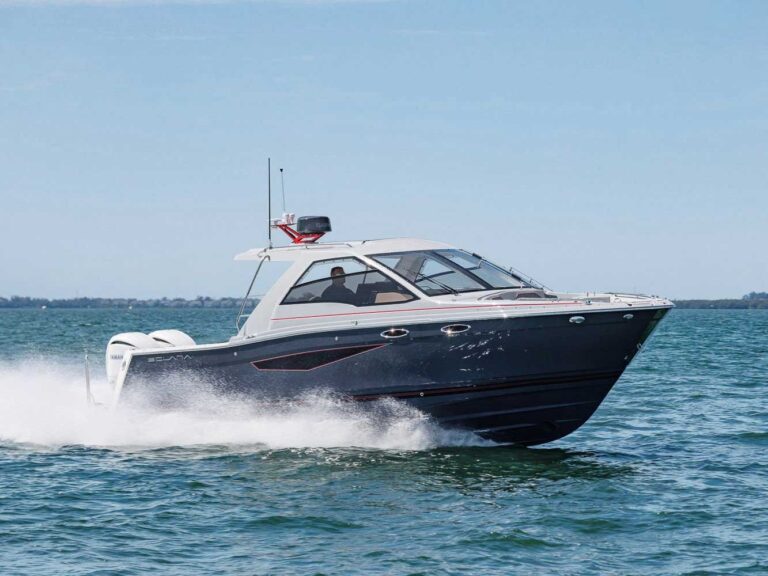
2024 Solara S-310 SC

Airmar Medium Ultra-Wide-Beam Transducers

Furuno TZTouchXL MFD Series

- Digital Edition
- Customer Service
- Privacy Policy
- Cruising World
- Sailing World
- Salt Water Sportsman
- Sport Fishing
- Wakeboarding
Many products featured on this site were editorially chosen. Boating may receive financial compensation for products purchased through this site.
Copyright © 2024 Boating Firecrown . All rights reserved. Reproduction in whole or in part without permission is prohibited.
- MAVERICK X3
- MAVERICK X3 BUNDLE
- MAVERICK SPORT
- MAVERICK TRAIL
- RANGER BUNDLE
- BRUTE FORCE
- Rear View Mirrors
- Side View Mirrors
- Lighted Mirrors
- Interior Lights
- Turn Signal Kits
- Phone&Tablet Holders
- Cup Holders
- Tool Holders
- Grab Handles
- Seat Covers
- Other Protection Accessories
- Camera Mounts
- Refrigerator
- NEW ARRIVALS
- Other Mounts&Brackets
- Mirrors Set
- Whip Lights
- Tail Lights
- Fang Lights
- Spare Tire Carriers
- Cargo Racks
- Gun Racks&Holders
- Fender Flares
- Windshields
- Soft Cab Enclosures
- Kemimoto Midnight Series
- RGB Soundbar
- Basic Soundbar
- Flag&Whip Light Mounts
- Cooler Brackets
- License Brackets
- Speaker Mounts
- Glasses&Goggles
- Pet Accessories
- Drive Belts
- Noise Reduction Kits
- Clearance Sale
- Get $20 Reward
- New Arrival 2024
- Universal Accessories
- My Wishlist
- Order Status

- MARINE SHOP ALL Protection Bimini Top Bumpers Other Protection Accessories Mirrors Rear View Mirrors Mounts & Brackets Camera Mounts Other Mounts&Brackets Holders Tool Holders Cup Holders Phone&Tablet Holders Storage Bags Boxes AUDIO Sound Bar Miscellaneous Switches Refrigerator Others
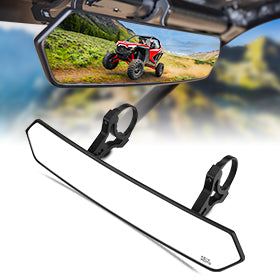
- SIGN IN / SIGN UP
- MY WISHLIST

SELECT A VEHICLE
Select a vehicle.
- Type Select Type 3 WHEELER ATV UTV
- Year Select Year
- Make Select Make
- Model Select Model
All Aboard! Your Complete Guide to Boat Fender: Types, Sizes, Usage, and More

Whether you're a seasoned sailor or just starting your nautical adventures, knowing about boat fenders is critical for protecting your vessel from damage. Today, we're diving deep into the world of boat fenders, exploring the various types, sizes, and crucial insights on when to use them effectively.
Read on and explore!
What Are Boat Fenders? And What Are They Used For?

Boat fenders, also known as marine fenders or bumpers, are essential accessories designed to protect a boat's hull from damage when docking alongside piers, wharves, and other boats. They act as a cushion that absorbs shock and prevents scratches, dents, or structural damage.
Typically hung or attached to the side of the boat, boat fenders play an essential role in maintaining the integrity and appearance of a boat's exterior. This helps extend its lifespan and preserve its value. Utilizing boat fenders properly is a basic yet vital aspect of effective boat maintenance and safety practices.
Why Are Boat Fenders Important?
Think about approaching a dock without any protection on the side of your boat. The hard surface of the dock could easily scratch or dent your boat's exterior, potentially leading to expensive repairs. Boat fenders are your first line of defense against such incidents, preserving both the beauty and integrity of your vessel.
Do I Need Boat Fenders?
Boat fenders are a crucial investment for any boat owner. Whether you have a small fishing boat or a large yacht, boat fenders play a vital role in protecting your vessel from damage while docking or mooring alongside other boats. They act as a buffer, absorbing impacts and preventing scratches, dents, or more severe structural damage to the boat's hull.
Without fenders, your boat is susceptible to costly repairs and diminished value over time. Therefore, having a set of durable boat fenders can save you money and keep your boat in top condition, ensuring it remains secure and well-maintained in various marine environments.
Best Boat Fenders at Kemimoto: EVA Boat Fenders
Kemimoto's innovative EVA boat fender boasts a clever and handy locking mechanism that ensures it stays securely in place, preventing drift. This flat fender is exceptionally resilient and flexible, offering excellent shock absorption. Additionally, it’s lightweight and easy to handle, making it an ideal choice for any boater.
Our latest EVA fender is built to endure extreme cold, handling temperatures as low as -70°C without any problems. It’s also resistant to chemicals, corrosion, and bacteria while being eco-friendly. Disposal is planet-safe. We're serious about innovation and setting new industry standards. Feel at ease with Kemimoto’s complete boat gear collection !
What Are Boat Fenders Made Of?
Boat fenders are made from tough materials that can really take a hit and last a long time. They're designed to soak up the bumps and knocks effectively when docking. Typically, you'll find boat fenders made out of sturdy materials like:
1. Vinyl : Vinyl is popular due to its UV resistance and ease of cleaning. Vinyl boat fenders are versatile, available in many colors, and hold up well under sun exposure. However, they can become stiff in cold weather and are more susceptible to punctures compared to rubber.
2. Foam : Foam is extremely lightweight and often inflatable but may lack long-term durability and UV resistance. Foam fenders are easy to move and adjust. However, they are less durable and can absorb water if punctured, which affects their buoyancy and effectiveness.
3. EVA : EVA boat fenders are a kind of foam fender that is awesome for its toughness and lightweight feel. They’re super durable, resist UV damage and cracking well, and don’t deflate. Whether you have bass boats, sailing dinghies, yachts, etc., EVA boat fenders are perfect if you're looking for reliable protection with minimal maintenance!

4. PVC : PVC boat fenders are durable and affordable. They're lightweight, easy to clean, and available in various sizes and colors. However, PVC may be less flexible in cold weather and can be prone to punctures. Additionally, they might degrade under prolonged UV exposure. Overall, PVC fenders offer cost-effective protection ideal for casual boaters.
5. Rubber : Known for durability, rubber fenders offer excellent shock absorption and resilience. However, rubber fenders can be heavy and bulkier than other types, making them difficult to handle and store.
Boat Fenders Types
There are different types of fenders for ships, including round, cylindrical, flat, hybrid designs, etc. Each design serves different dock configurations and hull types.
- Cylindrical Fenders
The most common type, cylindrical fenders, are versatile and straightforward in design. They can be hung vertically or horizontally, depending on your docking situation. These are suitable for most leisure boats and come in various sizes.
- Round Fenders (Ball Fenders)
Round fenders, or ball fenders, are perfect for boats that roll heavily at the dock or are exposed to significant waves. Their spherical shape provides all-around protection, making them ideal for larger vessels such as cruisers.
- Pneumatic Fenders
Commonly used for large ships and in commercial applications, these are air-filled for high energy absorption and low reaction force.
- Cell Fenders
Highly efficient and very durable, cell fenders offer great energy absorption capability. They have a cylindrical shape and are commonly used in oil and LNG facilities with large vessel sizes.
- Cone Fenders
Offering one of the highest energy absorption capacities among fenders, cone fenders are highly efficient. Their conical shape allows them to deflect more than other types while maintaining high energy absorption. They're suitable for both large and small vessels.
- Flat Fenders
Flat fenders are relatively newer in the market and are appreciated for their versatility and ease of storage. Flat fenders can be deflated when not in use, making them perfect for small boats with limited storage space.
- Bow and Stern Fenders
Designed specifically for the bow and stern, these fenders cater to the unique needs of these areas of a boat. They are particularly useful for boats with sharp bows.
- Transom Fenders
Designed for the stern area, this help protect your boat’s transom when reversing into a dock.
- Corner Fenders
Perfect for protecting the vulnerable corners on marinas or docks.
- Arch Fenders
Known for their simplicity and durability, arch fenders are widely used due to their ability to withstand heavy use. They feature a curved surface and are often employed in places with stringent space restrictions.
- Specialty Fenders
This category includes fenders designed for specific purposes, such as pontoon fenders, which protect the delicate aluminum rails and pontoons on pontoon boats, or transom fenders, tailored to guard the transom area of ski and bass boats.
What Size Boat Fenders Do I Need?

Too large boat fenders are harder to store and manage, especially on smaller vessels, and can impede the docking process by preventing the boat from getting close enough to the dock. Too small, and the fender won't provide adequate protection.
Here's a simple guideline for selecting the right size:
Boat Length : Generally, you should have one inch of fender diameter for every four to five feet of boat length. For instance, a 20-foot boat would require cylindrical fenders that are 4-5 inches in diameter.
Hanging Height : Fenders should hang just above the waterline but not so low that they drag underwater.
How Many Boat Fenders Do I Need?
The number of boat fenders you need depends on the length of your boat, the conditions you typically dock in, and how well you want your vessel to be protected.
As a general rule, consider having at least one fender for every 10 feet of boat length. For example, a 20-foot boat should have at least two fenders, whereas a 40-foot boat would benefit from four. However, if you often dock in crowded marinas or in conditions with strong currents or winds, consider using additional fenders to enhance protection。
Boat Fender Size Chart (With Numbers of Fenders)
Here’s a useful boat fender size chart based on the general guidelines to help you determine the right size fenders and how many fenders you should have.
|
|
|
|
|
|
| 3 in | 12 in | 3 |
|
| 4-5 in | 16-18 in | 3-4 |
|
| 6-7 in | 20-24 in | 4-5 |
|
| 8-10 in | 26-30 in | 4-6 |
|
| 10-12 in | 32-36 in | 5-7 |
|
| 12-15 in | 36-72 in | 6+ |
Consider the docking conditions and adjust your fender types, numbers, and placement accordingly for optimal safety and protection.
When Should I Put Fenders on My Boat?
Knowing when to deploy your fenders is as important as having the right ones. Below are scenarios that highlight proper fender usage:
Docking. Knowing when to deploy your fenders is as important as having the right ones. Below are scenarios that highlight proper fender usage:
Tying Alongside Another Boat . When mooring next to another boat, ensure that your fenders are placed at points of contact. This is often at varying heights, depending on the hull design and water conditions.
Mooring Against High Walls or Piles . Attach fenders whenever you moor your boat, particularly in crowded marinas where waves and movement from other boats can cause collisions.
Choppy Condition s. In rough waters, where your boat is likely to sway and bump more aggressively against docks or other boats, having fenders mounted can prevent significant damage.
During Storage. If you’re storing your boat in the water at a slip or berth, keep fenders on to protect against any unexpected knocks or bumps, especially in high-traffic areas.
How to Use Boat Fenders?
Here's how to use them effectively:
1. Select the Right Size and Type . Ensure you choose the appropriate fender types and sizes as discussed in the earlier section.
2. Positioning Fenders : Attach the fenders at the widest point of the hull and adjust them so that they hang just above the waterline. Space them evenly along the side of the boat that will come into contact with the dock or another boat.
3. Attaching Fenders : Use ropes, straps, or fender lines to secure the fenders to your boat. Tie the lines to sturdy fixtures like cleats or rails. Ensure the knots are tight and secure.
4. Adjusting Height : Adjust the height of the fenders based on tidal changes and the type of dock (floating or fixed). They should be positioned high enough to protect against the dock yet low enough not to cover any openings or interfere with docking.
5. Use Additional Protection : In windy conditions or rough waters, consider using extra fenders or specialized types like pontoon fenders for added security.
6. Regular Inspection and Adjustment : Regularly check the fenders during docking or when moored for extended periods. Adjust them as needed to ensure they provide maximum protection.
Best Practices for Fender Usage
Follow these tips to maximize the life and effectiveness of your boat fenders:
Proper Inflation : Over-inflated fenders are less effective at absorbing impacts and more likely to burst. Under-inflated fenders, meanwhile, fail to provide adequate protection. However, if you use EVA boat fenders, there’s no need to inflate or deflate as it can effectively absorb impacts and protect your boat.
Regular Cleaning : Keep fenders clean to avoid transferring dirt or debris onto your boat’s finish. Wash them regularly with soap and water.
Inspection and Replacement : Check fenders periodically for wear and tear. If a fender becomes severely damaged, replace it immediately to ensure continuous protection.
Correct Storage : When not in use, store fenders in a dry, cool place away from direct sunlight to prevent degradation.
Final Thoughts

In conclusion, understanding the different types, sizes, and proper usage of boat fenders is essential for every boat owner. Investing in high-quality fenders from trusted brands like Kemimoto ensures your vessel remains protected from costly damages while docking or mooring.
Remember to select the right size and type for your boat, position them correctly, and maintain them through regular cleaning and inspection. Whether you're navigating choppy waters or enjoying a calm marina, well-placed boat fenders will safeguard your boat's integrity and appearance.
Protect your investment and enjoy peace of mind on every voyage with the right boat fenders. For more expert advice and top-notch and easy-to-use boat gear, visit Kemimoto's comprehensive collection today. Happy sailing!
1. What Is the Difference Between a Boat Fender and a Bumper?
Though often used interchangeably, Bumper and Fender have distinct meanings. Boat Bumpers are installed on the dock, while Boat Fenders are attached directly to the boat.
2. How to Measure the Size of a Boat Fender?
First, consider your boat's length and weight. Generally, fenders should be 1 inch in diameter for every 4-5 feet of boat length. Then, measure the height to ensure it properly covers the boat’s hull side. Don't forget to account for docking conditions too!
3. What Size Fenders for a 34-Foot Boat?
For a 34-foot boat, you'll typically need fenders that are at least 8.5 inches in diameter and around 26 inches long to ensure proper protection while docking.
4. How Many Fenders for a 23-Foot and a 20-Foot Boat?
For a 23-foot boat, you’ll generally need three to four fenders. For a 20-foot boat, you typically need at least three fenders.
5. Where Is the Best Placement for Boat Fenders?
The best placement for boat fenders is along the widest part of your boat, ensuring they’re evenly spaced. Position fenders just above the waterline to protect against dock and boat contact, including at the bow and stern for optimal protection while docking. Adjust their height as needed based on dock conditions.
6. How to Tie Bumpers to a Boat Cleat
To tie bumpers to a boat cleat, use a simple clove hitch knot. Loop the fender line around the cleat twice, crossing over in an "X" shape. Ensure it's snug and secure. Adjust the fender's height as needed to provide optimal protection while docking or rafting.
7. How to Attach Boat Fenders to the Dock
Use strong ropes or fender lines to attach boat fenders to the dock. Securely tie the fenders to dock cleats or pilings at water level height. Ensure they’re evenly spaced and adjust their positions to shield your boat from contact with the dock, providing optimal protection while mooring.
Leave a comment
Please note, comments must be approved before they are published
This site is protected by reCAPTCHA and the Google Privacy Policy and Terms of Service apply.
Table of Contents
You may also like
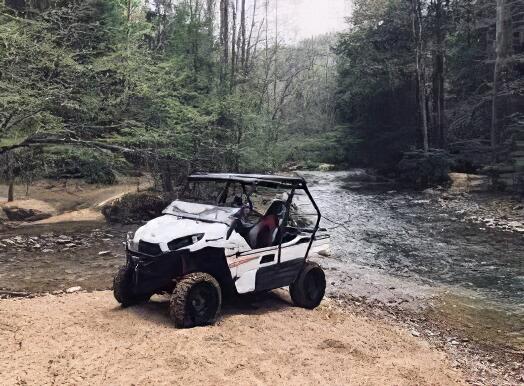

Thank you for choosing Megafend for all your mooring product needs! Feel free to shop and place your order online, then someone from our office will contact you for payment and final completion of your order, including shipping and tax costs.
Custom yacht transom fenders.
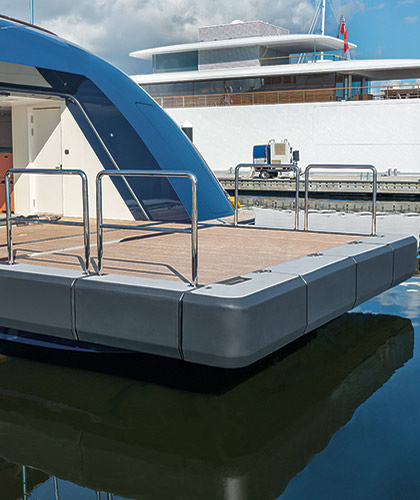
Created to provide long-lasting protection for mega/superyacht transoms and swim platforms from damage by tenders and water toys. Engineered tough, Megafend transom fenders are custom configured to size, match each yacht's contour and come in sections for easy, fast installation when needed. Each section is crew-friendly, light-in-weight for handling ease and ready stowing after use. "Megafend has designed transom fenders from ground zero and went through the trials and tribulations; the right glues, the right product to use, the right foam," says President Garry Linne, who personally inspects every product as it is crafted.
The closed-cell constructed units are solidly crafted for high impact and rigidity using composite materials and durable Hypalon covering engineered for the marine environment. Available in grey, black or blue non-slip soft-step coverings, or a beautiful faux teak that flexes as needed. Built-in ports accept handrails.
Built with integrity in the USA by skilled Megafend craftspeople!
CUSTOM TRANSOM FENDER GALLERY

Online ordering, continental U.S. only. International Customers , please call Megafend and mention our website, in order to receive 25% off of your order!
Global Message
- Apply for Vendor
- Vendors List
- Delivery & Payments

Common Mistakes to Avoid When Using Marine Boat Fenders
This time we are going to talk about both small mistakes and big blunders when it comes to using fenders. Marine boat fenders play a big role in guarding your vessel against all kinds of collisions, impacts and damage during mooring, but many yachtsmen unintentionally make mistakes that compromise the effectiveness of these popular safety devices. Based on our own experience, we will explore the most common mistakes when using fenders and will provide some insight on how to avoid them. By understanding these pitfalls and following the recommended practices, you can ensure optimal protection for your yacht and enjoy carefree yachting experience.
Choosing the Wrong Fender Size or Type
One of the most common mistakes yachtsmen make is selecting the wrong fender size or type for their vessel - opting for fenders that are either too small or too large can result in inadequate protection and potential damage to your boat.
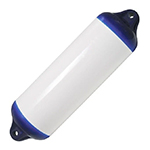
To choose the appropriate fender size, take into account the dimensions of your boat, including its length, weight and beam width. Additionally, think of the docking conditions you typically encounter – how often are you dealing with big waves, tides or rough waters?
Choosing the right fender type is equally important. The cylindrical fender is definitely the Swiss knife of boat protection, as it offers versatility and general protection for various boat sizes. However, for specific applications or unusual designs, specialized fenders like low-freeboard fenders or bow fenders may be more suitable. When it comes to size, for every 1.2 meters of the yacht’s length you should add another 2.5 cm of fender diameter. Here’s a handy chart:
| Fenders Size (S) / Diameter (D) | Yacht Length | |||||||
|---|---|---|---|---|---|---|---|---|
| < 5m | 6m | 8m | 10m | 12m | 14m | 16m | 18m | |
| Cylindrical Fenders, D | 100mm | 125mm | 150mm | 200mm | 250mm | 300mm | 350mm | 400mm |
| Round Fenders, D | 200mm | 250mm | 300mm | 400mm | 500mm | 600mm | 700mm | 800mm |
| Majoni Star, S | Star 1 | Star 1 | Star 2 | Star 3 | Star 4 | Star 5 | - | - |
| Majoni Buoy, S | RB1 | RB1 | RB1 | RB2 | RB3 | - | - | |
| Polyform A Series, S | A1 | A1 | A2 | A3 | A4 | A5 | A6 | |
| Polyform F Series, S | F01L | F1/F02 | F2/F3 | F3/F4 | F4 | F5 | F5/F6 | F7/F8 |
Consulting with topRik’s marine professionals, who provide advice based on the manufacturer guidelines, could help you in getting the most appropriate fender sizes and types for your boat – just send us a message when in doubt.
Choosing the Wrong Number of Fenders
Figuring out the correct number of fenders is crucial for optimal protection, and, when it comes to this, both having too few or too many fenders might cause serious problems. Insufficient fenders can leave vulnerable areas of your yacht exposed to potential damage, while excessive fenders can clutter the docking area and impede maneuverability and speed – you don’t want to turn your yacht into a huge clumsy inflatable dinghy. To determine the perfect number, consider the size, weight distribution, and vulnerable sections of your boat – one fender for every 2.5 meters of the side’s length is a good rule of thumb.
In general, larger boats or those with irregular shapes may require more fenders than usual to ensure adequate protection. Other than that, make the decision based on the docking plan and potential contact areas during mooring: bow and stern areas, as well as corners of the hull, rubbing strakes, and protruding structures, are particularly vulnerable (and dangerous to other yachts) and require proper fender placement. Striking a fine balance between sufficient protection and practicality is key when determining the appropriate number of fenders for your boat.
Boat Fenders - All you need to know How to Tie a Fender
Incorrect Fender Placement
Improper placement is a mistake that can completely negate all the usefulness of even the most expensive protective device. Correct fender placement involves identifying the areas of your boat that are most susceptible to impact during docking or passing through a lock – it is usually the widest beam points, where maximum protection is needed. For some reason it is not rare to see a boat without any such protection in various marinas!
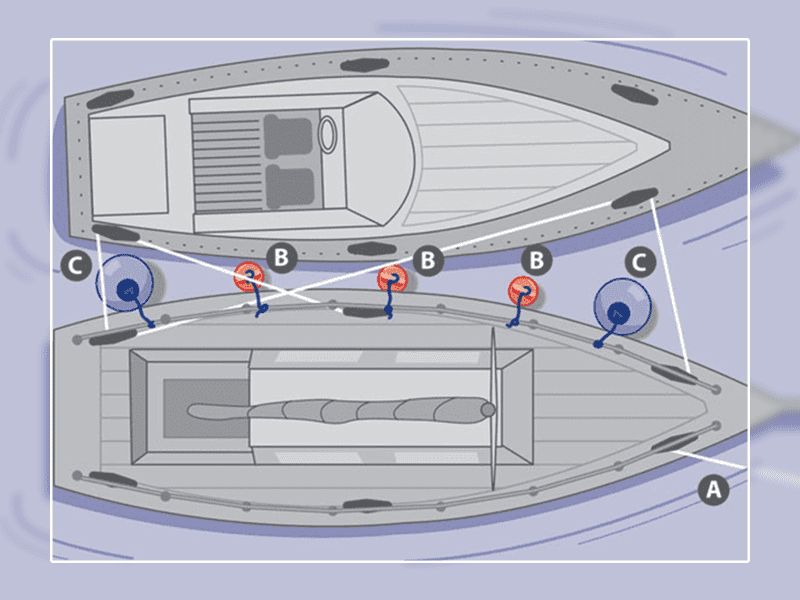
In addition to the beam points, again, consider placing fenders near potential contact areas, such as corners, edges, and areas prone to friction. Try to imagine your yacht crashing into a pier or another yacht – what parts would require repairs afterwards? The angle at which the fenders are placed also plays a role, they should be positioned vertically, perpendicular to the hull, to provide effective cushioning and impact absorption. Make sure that the fenders are securely fastened using proper attachment mechanisms, such as ropes, fender lines, or specialized fender hangers and learn some simple reliable knots, such as clove hitch, to tie them like a professional.
Different docking scenarios may require specific fender placements. For example, when mooring alongside a dock or pontoon, fenders should be positioned to protect the boat from rubbing against the structure.
On the other hand, when rafting with other vessels, fenders should be placed to prevent direct contact between boats. Understanding the specific docking situation and applying appropriate fender placement techniques will ensure maximum protection for your boat.
Wrong Fender Height
Neglecting to adjust the height of the fenders as the water level changes during high and low tides can also render them quite useless: when positioned too high or too low they fail to provide adequate cushioning, since the impact area changes place. That’s why it is important to adjust the fender height to match the changing water level based on local tide charts, that are a must have for every skipper. A quick draw device like this one might help at that:
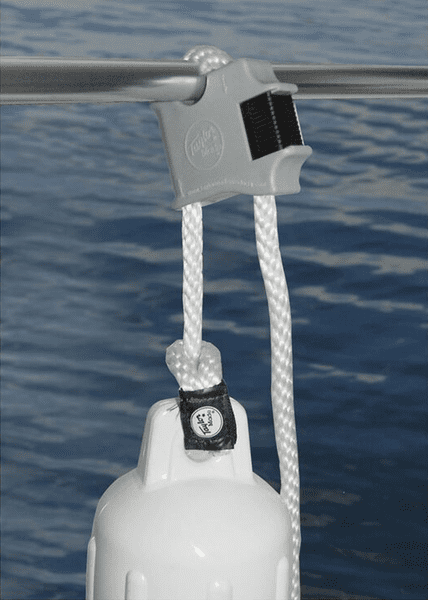
During high tide, raise the fenders to a suitable position to accommodate for the increased water level - as the boat rises with the tide it will still be protected. Similarly, during low tide, adjust the fenders downward to align with the lower waterline. Doing this will prevent the fenders from being positioned too high above the boat, exposing the boat’s belly.
Neglecting Timely Fender Maintenance
Let’s not forget about the importance of proper servicing - neglecting it might lead to premature rupturing, decreased performance, and overall compromised protection for your vessel. You don’t want a broken valve or to see your fender burst in a dangerous mooring situation – imagine that happening when going through chores like fender inspection, cleaning, and inflation checks – always works for us.
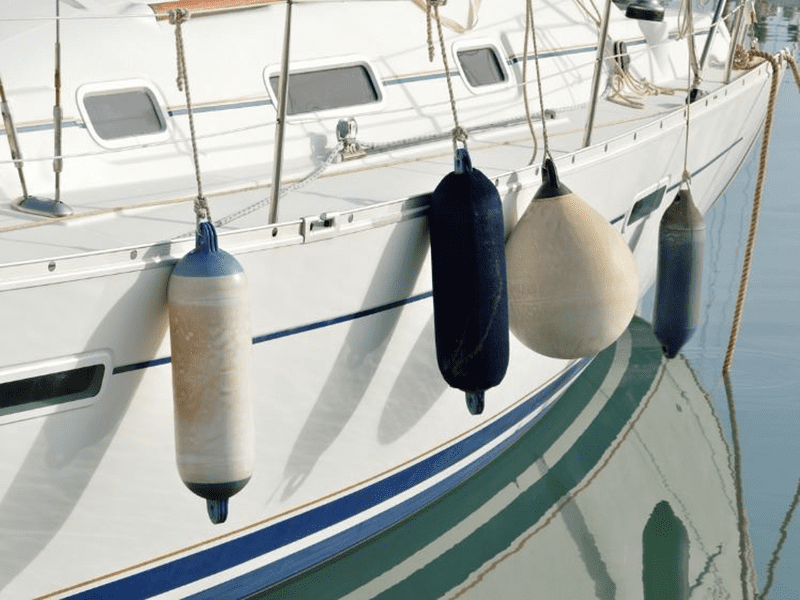
Regularly inspect your fenders for any signs of wear, tear, or damage, look for any leaks, cracks, or deflation, since these problems can significantly impact the fender's ability to protect your boat. If you notice any damage, consider repairing or replacing the fender completely before next trip – it is always cheaper to replace a fender than to pay an invoice for caused damages.
Don’t shy away from cleaning all your protection gear to remove dirt, grime, algae, salt deposits, or any other stuff that may accumulate over time. You can use regular soapy water and a soft brush to clean the fenders thoroughly, just rinse them well after that and allow them to dry completely before locking them in some storage place. By doing this you not only prevent buildup of substances that can deteriorate the material over time, but also improve the visual appeal of your boat.
How to Replace a Valve on Boat Fenders Guide: Boat Fenders Size
Controlling the inflation process is another critical aspect of fender maintenance – it is best to check the air pressure regularly and adjust it as needed to maintain optimal firmness, which might be tricky as the weather changes. Over-inflation might cause the fender to become too bouncy and less effective in terms of impact absorption, while under-inflation can reduce its protective capabilities. Refer to the manufacturer's guidelines for the recommended air pressure range specific to your fenders.
Taking the time to understand and address these common mistakes is no easy feat with all the problems that arise daily during a voyage. But think about it as protecting your investments – you got yourself a great yacht, you also got some nice fenders and it would be a shame if a completely avoidable accident happened just because you misplayed your cards! Fenders might not be the most exciting thing about boating, but they allow for excitement to happen.
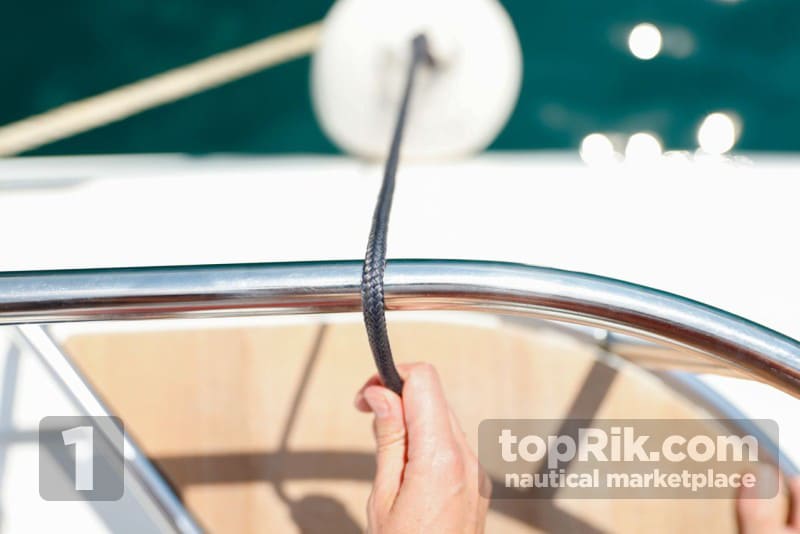
If you really don’t want to make your own decisions when it comes to boat protection, well, you don’t even have to. Just send an e-mail to [email protected] or use topRik’s feedback system to get answers to any questions regarding fenders – we sell a whole lot of different models and can help you navigate through the fender jungle without headache.
- Boat Fender or Bumper - what is the difference?
- The Benefits of Using Marine Fenders for Your Boat
- The Science of Marine Fenders
- The Benefits of Using Inflatable Fenders
- The Role of Marine Boat Fenders in Boat Maintenance

- Glossary of Nautical Terms
- Law & Rules

- Profile details
- Comparison list
- Gift certificates
- Terms of Use
- Privacy Policy
- Refund Policy
- Tallinn, Valukoja 8/2 (Regus Offices)
- +37253060890
- Mon-Sun 10.00 - 18.00
- [email protected]
- View on map
- Leave feedback

Please verify you are a human
Access to this page has been denied because we believe you are using automation tools to browse the website.
This may happen as a result of the following:
- Javascript is disabled or blocked by an extension (ad blockers for example)
- Your browser does not support cookies
Please make sure that Javascript and cookies are enabled on your browser and that you are not blocking them from loading.
Reference ID: 617573e1-39d5-11ef-b594-47b3a64f2555
Powered by PerimeterX , Inc.

Xquip has a wide range of fender systems to protect the platform when mooring the tender to the yacht. All our fenders are designed to excel in the highest levels of reliability, portability and safety.
We produce carbon pilar fenders and foam fenders for berthing tenders alongside the yacht. The pilar fenders ensure that the tender will not go up or under the platform and the foam fenders are a complete edge protection for platforms.
Xquip’s pilar fenders are all made of autoclaved carbon fiber, this ensures that the fenders have an optimal strength-to-weight ratio. Made to protect the platform for the heaviest tenders and still light weight enough to be operated by a single person. Our assortment of pilar fenders have been designed to be tailored for the most prestigious and complex yachts.
The solid core foam fenders are made from a high-density foam and Hypalon fabric shelling. Only the best manufacturing methods have been taken in consideration during the development of these fenders. Our solid core fenders will be custom made to fit your platform. Even though each foam fender will be custom, the same Xquip foam production techniques will be present.
We guarantee the right fitment for your fenders. Guiding you through the fender project with engineering advice and technical support making the purchase of fenders accessible during any phase of the yacht’s life.
Please visit the product detail pages or contact the Xquip sales representative now for more information and outfitting possibilities!

MATCHING AESTHETICS
Our fenders uniquely match the aesthetics of your yacht with its timeless design and customisable finishing options. Whether you like the see the the fender in raw carbon fibre under an impeccable high gloss clear coat, or painted in the colour of your yacht, we are able to match our products to the aesthetics of your yacht.
CUSTOMISABLE DECK FITTINGS
We provide various customised deck fittings with each fender that are designed to fit the specific deck layout and construction of your yacht.
FENDER TECHNOLOGY
A high degree of form freedom is possible for the soft area of the fender as it is milled from high density foam. Due to this process it is also possible to deboss the ships logo or name into the foam. To prevent the foam from tearing apart it is covered with a tough polymer skin.

Pilar fender for yachts up to 15 tonnes.
Essential Fender

Pilar fender for yachts up to 12 tonnes.
Roll Fender

Rolling pilar fender for yachts up to 12 tonnes.
Transom Fender

Full platform protection
M30 fender decksocket

Single pin pilar fender decksocket.
M12 decksocket

Fender decksocket for securing transom foam fenders to the deck
Fender decksocket 120mm

Fender decksocket for securing pilar fenders into the deck.


Best Boat Fenders For You (Ultimate Guide)
Boat bumpers and fenders come in all sorts of different shapes and sizes. Not only are there cylinder fenders, but there are round ones, flat ones, and so many more types of fenders. By the end of this article, you will know absolutely everything about boat fenders and which ones you will need for your vessel.
First I’m going to talk about the three most popular fenders and then talk more about unique fenders later in the article.
3 most popular boat fenders
Best all-around.

Cylinder Fenders
Commonly used on boats as they provide a large surface area and can still be stored quite easily.
Best For Large Boats
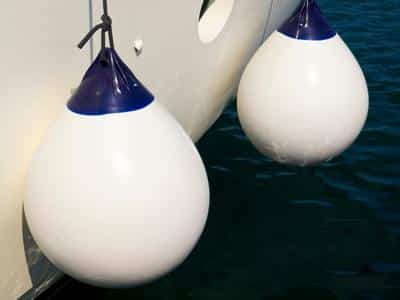
Spherical Fenders
These fenders can withstand a lot of force. So they’re best used for large boats and during docking.
Best For Small Boats
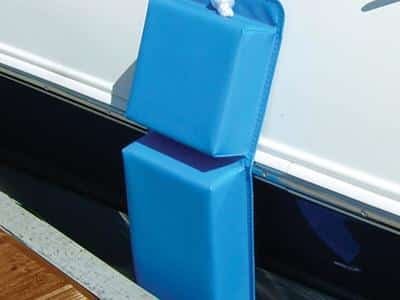
Flat Fenders
Easily stored, but doesn’t have a large enough diameter to handle heavy or maneuvering boats.
Although these are the most used fenders, there are many more available on the market including:
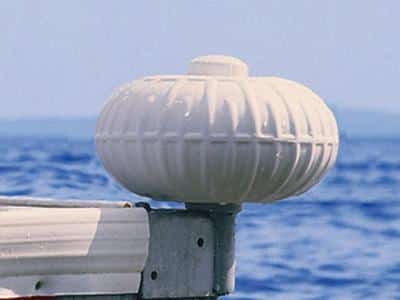
Dock Wheel Bumper
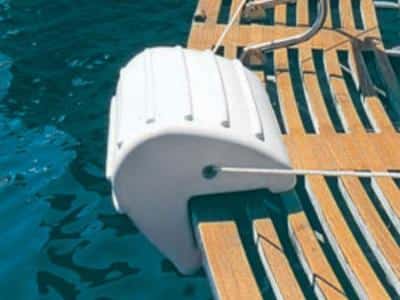
Transom Fenders

Cushion Fenders

V-shaped Fenders
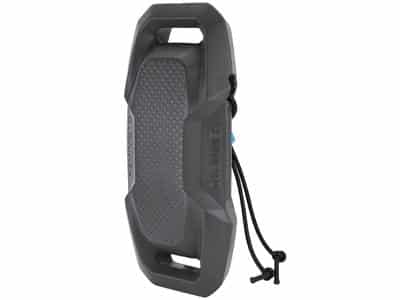
Fender Pads
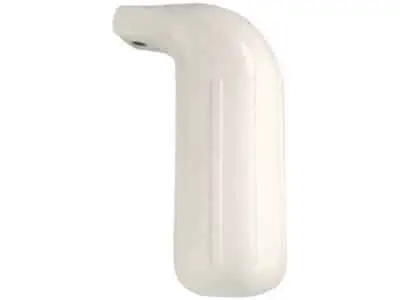
Low Freeboard Fender
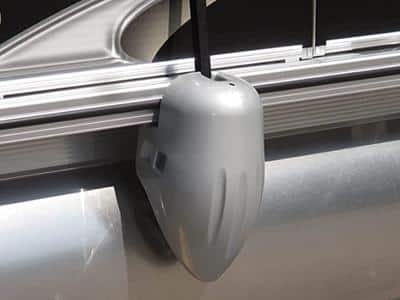
Pontoon Fenders
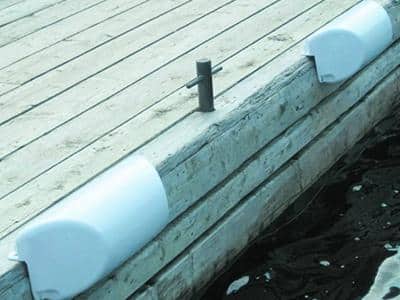
Dock Edging

Inflatable Fenders
Click on any of these to purchase them or continue reading to learn more about them.
Note: Most of the products I mention in this article are made by Taylor Made and sold on Amazon. They are a very proven company that has been making boat fenders and bumpers for over 100 years, and they generally have the highest review ratings compared to their competitors.
Table of Contents
Boat fender sizing
Before we start talking more about specific fenders, let’s look at what size you need to get.
The general rule is 1″ of diameter for cylindrical fenders or 2″ of diameter for spherical fenders for every 5 feet of boat length. However, it’s never a bad idea to get a size larger than recommended, especially if you’re boat is in an area that gets a lot of storms, wind, waves, etc. which could cause it to bash against a dock.
| Boat Length (ft) | Cylinder Fender Diameter (in) | Spherical Fender Diameter (in) | Flat fender Size |
|---|---|---|---|
| under 15′ | 3″ | 6″ | Small |
| 16′-20′ | 4″ | 8″ | Small |
| 21′-25′ | 5″ | 10″ | Medium |
| 26′-30′ | 6″ | 12″ | Medium |
| 31′-35′ | 7″ | 14″ | Medium |
| 36′-40′ | 8″ | 16″ | Large |
| 40′-50′ | 10″ | 20″ | Large |
| 51′-60′ | 12″ | 24″ | Large |
| 61′-70′ | 14″ | 26″ | Large |
Pros and cons of each fender type
Below I’ve listed all the different types of boat fenders. I’ve included pictures, pros and cons, and more about each one. Click on the fender you want to learn more about.
- Easy to store
- Large surface area
- Works for pretty much all types of boats
- Lots of different size options
- Does not have as large a diameter as spherical fenders
- Can slip pretty easily
There are two different types of cylinder fenders including:
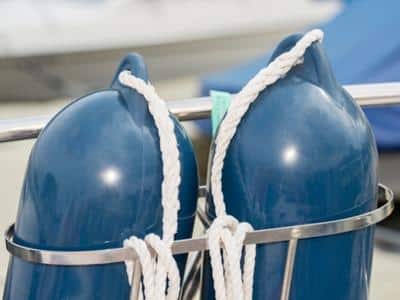
Double-eye cylinder fenders are usually smaller than center-hole fenders making them easy to store away and easy to use. They have a dual-hole system, allowing you to connect a rope to both sides of the fender.
These fenders are most popular with small to medium-sized boats, but they do make the large enough for large vessels as well.
Center-hole

Center-hole cylinder fenders can be used both on your boat and on your dock. You can easily tie them sideways on a dock or your boat without needing to connect multiple ropes to both sides of the fender. A downside to them is that they are bulky and hard to store.
I usually only recommend having one or two of these fenders on your boat to protect the largest surface area (generally the sides near the stern). And if you have a boat smaller than 30 feet, you probably won’t need one.
- Large diameter means more protection
- Many different sizes
- Hard to store
- Can slip or move easily
- Lightweight
- Not as effective as inflatable fenders

- Helps adjusts your hull into your slip

- Protects your transom
- Great if you have a dingy or jet ski attached to your stern

- Great for protecting your boat against sea walls or poles
- Basically a mix of a flat fender and cylinder fender
- Best to use on a dock and not on your boat
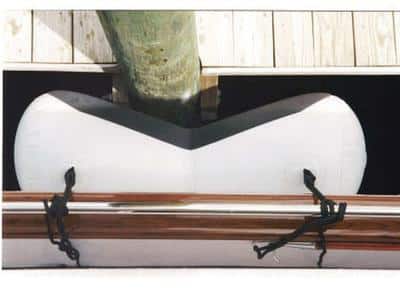
- Provide a lot of protection (best used for large vessels)
- Stay centered on a pole

- Don’t slip as easily as cylinder fenders
- Don’t cause scratches or marks
- Not as protective as cylinder fenders

- Protect the top and sides of your boat
- Best for low riding bass boats

- Easily clip onto pontoons
- Only can be used for pontoon boats

- Protects your boat and dock in case of errant docking

- Comes in many different sizes
- Very large surface area
- Very large diameter
- Can be deflated and stored easily
- May need to reinflate them every so often
Best boat fender for different boat types
| Boat type | My Recommended Fender(s) | Other Possible Fenders |
|---|---|---|
| Bass Boats | low freeboard fenders | cylinder fenders, fender pads, flat fenders |
| Bowriders | cylinder fenders | Fender pads, flat fenders |
| Pontoon Boats | pontoon fenders | cylinder fenders |
| Jet Skis | cylinder fenders or fender pads | small spherical fenders |
| Ski Boats | cylinder fenders or flat fenders | fender pads, low freeboard fenders |
| Deep V Fishing Boats | cylinder fenders | fender pads, flat fenders |
| Bay Boats | cylinder fenders or low freeboard fenders | fender pads |
| Center console boats | cylinder fenders | spherical fenders, fender pads |
| Sailboats | cylinder fenders | spherical fenders, flat fenders, transom fenders |
| Cuddy cabins | cylinder fenders | spherical fenders, transom fenders |
| Cabin Cruisers | cylinder fenders and spherical fenders | transom fenders |
| Yachts | spherical fenders and inflatable fenders | cylinder fenders, v-shaped fenders, transom fenders |
Many boats, especially larger ones are best protected by multiple different types of fenders on the boat and on the dock. For example, Yachts can be protected by cylinder fenders and/or spherical fenders, but it’s always a good idea to also have dock bumpers such as inflatable fenders, V-shaped fenders, and cushion fenders.
Best fender accessories
Fender accessories can help make your life easier and protect your boat from fender marks and scratches. Here are all of the different accessories I was able to find:
Fender covers
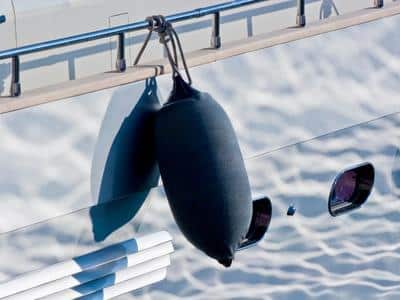
Fender covers not only improve the aesthetic of boat fenders, but they also help you avoid any marks or scratches that may be caused by them.
Although fenders are meant to cushion your boat, the plastic used on them is still quite hard and can rub away your gel coat over time, especially if you have a heavy boat in a high current area.
Having a fender cover will help eliminate any possible damage.

One of the most annoying things to do when you’re relaxing at the sand bar or beach is to have to rush your bumpers on as someone is pulling their boat up to you.
This product called Fendergrip, made by New World Marine solves this. It makes putting your fenders down to the perfect height and keeping them there a million times easier.
You don’t even have to tie any notes, just adjust the rope to the right hight and clamp it down.
Fender rack
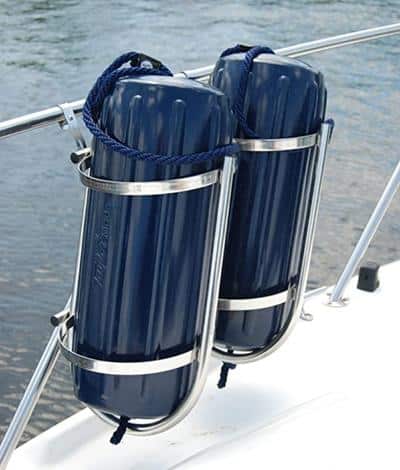
A fender rack makes storing, securing, and deploying cylinder fenders so much easier than if you were to store them in storage compartments in your boat.
Taylor Made makes this one, and it easily connects to almost any railing or stanchion system.
The buy now button below puts two different products in your Amazon cart, one is a fender rack for 7-9 inch diameter fenders, and the other is for 9-11 inch. Just make sure to delete the one that is not the correct size for you.
What are the best boat fender brands?
The brand most of the products I am recommending in this article is Taylor Made and sold on Amazon. They have been in the fender business for over a century and have almost every kind of boat bumper/fender you could dream for.
However, you can expect the same or similar quality from other brands such as:
- Bass Pro Shops
How many fenders should a boat have?
You should have 1 fender per side for every 5-10 feet of boat, and no boat should have less than 3 fenders per side. Meaning a 15-foot boat should have 3 fenders per side, and a 50-foot boat should have 5-10 fenders per side. The amount you should use depends on factors such as where you are mooring, weather conditions, etc.
| Size of Boat | Fenders Per Side |
|---|---|
| 20 feet | 3 |
| 25 feet | 3 |
| 30 feet | 4 |
| 35 feet | 4 |
| 40 feet | 5 |
| 45 feet | 5 |
| 50 feet | 6 |
| 55 feet | 6 |
| 60 feet | 7 |
| 65 feet | 7 |
Fender should not be out when you are moving, they will just slow you down. However, when you are in a situation in which you need to put them down, they should be spread out evenly across your hull such as in the vessel from this image:

Related Article: How Many Fenders Do You Need For Your Boat?
How to clean boat fenders
Due to algae and barnacles, boat fenders can get very dirty very fast. This can rub off on your boat and leave algae marks that can be hard to get out. In order to keep them clean, you should:
- Keep them out of the water as much as possible . Leaving fenders in the water is the number one cause of dirty fenders. Marine growth will start to form in as little as a week and will be a pain to get out.
- Dry them off before putting them into storage . Water can cause mold and algae growth, so making sure you dry your fenders off and don’t store them in a wet area is important in keeping them clean.
- Clean your fenders with soap and fresh water regularly . Whenever you clean your boat, it’s always a good idea to do your fenders as well. Cleaning them regularly will make sure you don’t have to worry about any deep stains that may be very hard to get out.
However, if you fenders are already dirty and look something like the image below, you will need to use a few products and cleaning techniques to get them looking good again.
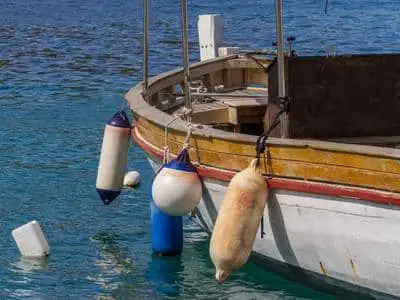
Here are the 4 steps to cleaning a boat fender:
- Take your fender somewhere away from the water or grass so no cleaning products can harm anything.
- Apply regular cleaning soap and cleaner bleach spray to the fenders and scrub them with a moderately stiff bristle brush .
- You can also use a pressure washer to get off any stains and marine growth.
I would not recommend you use any harsh chemicals as this can eat away the plastics on your fenders and not only reduce their lifespan but also possibly cause the plastics to rub off and stain your boat hull.
Added Tip: After lightly cleaning your fenders, you can spray them with tire foam . This will not only clean them more, but it will also restore their look.
Sometimes your fender may be dirty due to it rubbing off paint and gel-coat on your hull. Here is a clear example of this:

If you believe this is happening, you should purchase a fender cover such as this one to protect your hull and fender. Fender covers cover the hard plastic on fenders and eliminate rubbing.
How to tie a boat fender
If you don’t have fender clips, tying your fender to a rail requires a bit more effort. Check out the video below to learn how:
Where to find good deals on boat fenders
Included in this article are links to boat fenders mostly made by Taylor Made and sold on Amazon. These are top-end fenders and will last you a very long time. However, they are a bit pricy when compared to other brands on Amazon.
After checking out some of these cheaper brands, here are the three I found to have the best reviews and most relevant products:
- Dock Edge (specialize in dock bumpers including dock edges, dock wheels, etc.)
- Affordura (medium-priced cylinder fenders)
- Vingli (Very cheap cylinder fenders)
However, another great way to find boat bumpers and fenders is on the used market. For example, I went to Facebook Marketplace and searched for “boat fenders”. Here are the results:

Plenty of deals on fenders, many of which are made by good brands such as Taylor Made. They may need a bit of cleaning , but after that there about as good as new. I would recommend purchasing used from high-quality brands such as Taylor-made or polyform over the super cheap Amazon brands. Even though there used, they will still most likely last longer.
And before I end this article, here’s another look at the most popular boat fenders, so you don’t have to scroll all the way up to the top to purchase them.
- Recent Posts
- What Is The Cheapest Way To Store A Boat? - February 28, 2023
- Do Boats Need Bottom Paint? (Uncovering the Truth) - February 2, 2023
- How Much Is Bass Boat Insurance? (Real Quotes) - January 18, 2023

- Subscribe Now
- Digital Editions

How to set up your boat fenders correctly
- Top stories
Utterly essential but often forgotten and under-appreciated, fenders have the unenviable task of keeping your boat safe from contact with other vessels, pontoons or quay walls...
Correctly sized and positioned, boat fenders cushion the initial impact and dissipate the kinetic energy of your boat’s momentum, thereby avoiding costly damage to your own or other people’s craft.
The first task with all fenders is to attach them to the boat. Unless you have built-in fender buttons or use aftermarket clips, this usually involves tying the fender lines to a guardrail.
There are two boating knots I find suitable for this; the clove hitch, and the round turn and two half hitches. I always seem to find myself using clove hitches, as they are simple to do and easy to adjust.
However, they do have drawbacks, namely they are prone to slipping unless you add an extra locking hitch to make them secure for the longer term. A round turn and two half hitches is more secure and therefore better suited for occasions when you plan to leave the boat unattended.
They are also easier to tie when attaching them to the base of vertical stanchions, particularly when stretching up from the dock. There’s another good reason for doing this, as the lower the attachment point, the less stress they place on the guardrails.
Article continues below…
How to coil mooring lines: This simple method ends tangled rope frustration
How to tie 4 essential boating knots and when to use them.
So, I usually tie them to the top of the guardrails when coming in to moor but then lower them to the stanchion bases before leaving the boat so they put less strain on the deck joints.
I am also a fan of having the fender closest to the stern hung off a deck cleat using a loop, as this allows for quick deployment and leaves more room on the cleat for stern lines and cross springs. It also means that it’s easy to grab if you need a ‘roving’ fender in a hurry.
The type of fender used is often dictated by how much room you have to stow them on board; cylindrical fenders are easier to stow in lockers and look neater when tied in a row on the stern.
Ball fenders, whilst a pain to stow, offer more protection for awkward stern quarters, and where the shape of the bow makes a vertical fender harder to deploy accurately. Being round, they are also very handy for pivoting the boat on or around to assist with exiting an awkward berth.
How you position your fenders is also vital. For coming onto a pontoon, I like them to be positioned with about a third of their length (around 6in/15cm) below the edge of the object they’ll be touching.
This allows them to roll a bit as you dock without being dislodged. Too high and they can pop out, too low and they can be pushed under the pontoon. For contact with quay walls, or if rafting onto another vessel, you want them to be protecting the widest point of the boat, usually the rubbing strake where the hull and topsides meet.
On a motorboat, the relatively square stern is often the most venerable spot, so position your biggest and best fender there. Then, I generally go for three more cylindrical fenders along the flat mid-sections of the topsides, with a ball fender just as the curve of the bow moves away from the dock.
The ball allows a slightly bolder approach when coming alongside without the aid of thrusters or IPS. They also make leaving with a wind-on situation easier as you can pivot around the ball fender and reverse away.
Lastly, keep them clean, as any dirt, grit or salt they collect will be ground into your hull, wearing away the polish and eventually the gelcoat, causing dull patches where the fenders have been hanging. Fender covers help but will need periodic washing to avoid the same fate.
First published in the January 2024 issue of MBY.
Expert skills: How to get more from your depth sounder
World’s coolest boats: xsmg xsr 48 – the ultimate diesel superboat, 4 of the best motor boats under £50k to buy right now, latest videos, bluegame bgm75 sea trial: the €6.8m powercat that thinks its a monohull, cormate chase 32 tour: fast, stylish and practical weekender, axopar 29 sea trial: sun top vs cross cabin – which is best, sunseeker ocean 182 – see how this compact superyacht copes in a wet and windy sea trial.

IMAGES
VIDEO
COMMENTS
Super Gard™ fenders marry the two-eyelet shape of the Hull Gard™ fender with the thick walls and ribbed design of the Big B™. Super Gard™ fenders can take the toughest abuse your boat can hand out. Made from the highest quality marine grade vinyl, Super Gard™ fenders feature a high gloss finish and double molded black ends for extra ...
We listen, we visualize, we create. Even now we are redefining inflatable fenders with tougher, stronger new-gen materials and welded seams. We do it all in-house for ultimate control and no-compromise extreme quality. Integrity is our commitment, our gear performance is guaranteed. By the way, our gear also adds an elegant look to compliment ...
Following a theoretical approach, we should position the fenders approximately 2 meters apart, taking into account their diameter, which can range from 9 to 50 cm, depending on the boat's size and the height of the bulwarks. For example, on a 10-meter sailboat, we can apply 3 cylindrical fenders, each with a diameter of 20-25 cm, on each side.
Sizing Fenders by Boat Length. We like roughly 1" of diameter for cylindrical fenders or 2" of diameter for spherical fenders for every four-to-five feet of boat length. This is not a firm recommendation because fender size also depends on location, boat weight and conditions. Boats in unprotected end ties on Lake Erie, San Francisco Bay or ...
Polyform G series boat fenders. Available in six sizes to accommodate boats from sub-10 feet to up to 40 feet in length, the Polyform G Series is a high quality, good looking product boasting an even wall thickness for strength and durability. Moulded-in ribs add to the strength while also providing protection against abrasion.
Discover what makes us Uniquely Polyform. The Polyform US guide to boat fenders draws from our experience making boat fenders for over 70 years. Choosing the right fender and using them as intended is critical to protect your boat and getting the most out of your fenders. From docks, locks, rafts, and pilings we've got you covered.
Yacht Grot is a leading marine hardware and accessories supplier (chandlery) based in Fremantle, Western Australia. With a strong reputation for quality advice over 30 years, we can assist the novice recreational sailor through to superyacht captains and others outside the marine industry. Our staff take pride in helping you find solutions for ...
PF-15 (48"x120") $1,670.00. Need fenders for your boat or yacht? ProStock Marine Extreme Yacht Fenders are the very best! We carry a full line of assorted size protection fenders ranging from 12 inches in diameter by 24 inches long to 48 inches in diameter by 168 inches long long. All of our EXTREME Boat Fenders and Yacht Fenders have been weld.
A boat fender, like the fender on your car, is designed to protect. It offers a buffer between your boat and the dock, shielding your hull from damage. Boat fenders are used each time you tie up. They are important to keep on the boat, so you are protected anywhere you go. Most docks have built-in bumpers of their own, which are like fenders ...
2.2. D-shaped Fenders. As the name suggests, D-shaped fenders have a flat surface on one side, making them ideal for protecting flat areas on boats, such as gunwales and hull sides. They can be easily attached to the boat's surface, and their unique shape provides excellent protection against impact. 2.3.
Choose a fender diameter based on the size of your boat. An inch of diameter for every 4' - 5' of boat length is a good rule of thumb for the classic cylindrical fender. With an eyelet at each end, these can be hung both vertically and horizontally. If choosing ball-style fenders (typically used on larger or commercial vessels), up that ...
The best placement for boat fenders is along the widest part of your boat, ensuring they're evenly spaced. Position fenders just above the waterline to protect against dock and boat contact, including at the bow and stern for optimal protection while docking. Adjust their height as needed based on dock conditions. 6.
Created to provide long-lasting protection for mega/superyacht transoms and swim platforms from damage by tenders and water toys. Engineered tough, Megafend transom fenders are custom configured to size, match each yacht's contour and come in sections for easy, fast installation when needed. Each section is crew-friendly, light-in-weight for ...
Choosing the Wrong Fender Size or Type. One of the most common mistakes yachtsmen make is selecting the wrong fender size or type for their vessel - opting for fenders that are either too small or too large can result in inadequate protection and potential damage to your boat. Cylindrical Fenders Round Fender Ladder & Steps Fenders Thru-hole ...
For anchoring your boat off-shore we offer a wide selection mooring bouys and the associated anchoring hardware. Our selection of fenders, bumpers and buoys for sale allows you to select the perfect style, size, shape, and color for your unique needs. You can also find fender racks for storage, the correct marine rope for attaching your buoys ...
The G-3 Series (5 1/2" diameter x 19" length) is a great fender for your 15' to 20' lake boat. Polyform's G Series fender was first produced back in the mid 1980s and has become Polyform's most popular utility fender. Designed for use by trailered boats and in permanent protected moorings. Molded-in ribs for puncture and abrasion resistance.
Handles on the top and back combined with an overall weight of around 17kg make it easy to handle. While designing our fenders we do not compromise form with function. It is always our goal to achieve great aesthetics. Lightweight, custom made carbon fibre fenders for yachts, superyachts and tenders. Easy to handle and to install on the deck.
spherical fenders and inflatable fenders. cylinder fenders, v-shaped fenders, transom fenders. Many boats, especially larger ones are best protected by multiple different types of fenders on the boat and on the dock. For example, Yachts can be protected by cylinder fenders and/or spherical fenders, but it's always a good idea to also have ...
How you position your fenders is also vital. For coming onto a pontoon, I like them to be positioned with about a third of their length (around 6in/15cm) below the edge of the object they'll be touching. This allows them to roll a bit as you dock without being dislodged. Too high and they can pop out, too low and they can be pushed under the ...
Swedish and braidline splicing fids. We would be pleased to advise you on the best rope for your job - feel free to contact us on (08) 9430 6766. Yacht Grot is a leading marine hardware and accessories supplier (chandlery) based in Fremantle, Western Australia. With a strong reputation for quality advice over 30 years, we can assist the novice ...
VIVOHOME Vinyl Boat Fender. Where to buy VIVOHOME Vinyl Boat Fender: Amazon. Suitable for boats, yachts, sailboats, rowboats, and docks, this fender kit from VIVOHOME comes with four boat fenders—available in the 6.5 x 24 in., and 8.5 x 27 in. sizes—four 5.2' ropes, four inflating needles, as well as a hand pump to inflate your bumpers.
HIGHLY CUSTOMIZABLE. Fendertex Fenders are highly customizable, allowing you to perfectly match the color scheme of your boat. Just about every component of the Fendertex Fender you can customize somehow. For example, you can change the color of the fender cover, whips, and D-ring, while also having your boat name or logo knitted into the cover.
Yacht Grot is a leading marine hardware and accessories supplier (chandlery) based in Fremantle, Western Australia. With a strong reputation for quality advice over 30 years, we can assist the novice recreational sailor through to superyacht captains and others outside the marine industry. Our staff take pride in helping you find solutions for ...